Editor’s Note: This post is written by a member of LTV’s sponsored content team, The Leisure Explorers. Do you own a Leisure Travel Van and enjoy writing? Learn more about joining the team.
As snowbirds, Sharon and I are often in need of finding paths to take us south to warmer climates. We hadn’t had the opportunity to travel south for the last two years due to COVID, so we decided to leave earlier this year than usual. Since the weather cooperated, we spent a week traveling through Kentucky. We found some fantastic locations and would like to return to spend more time in the state.
For our first day of driving south from Ontario, we selected a Harvest Host, which was a farm in Kentucky called Steeple View Farm. The host was extremely particular about his directions, and he asked us to call him when we were 1 hour away and then call again when we exited from the Interstate so he could give us detailed directions to find his place. We had no problem finding the place and had a nice sunset from our campsite. The following morning, we connected with the host so we could buy some farm products (the bourbon peach jalapeno pepper jelly was excellent).
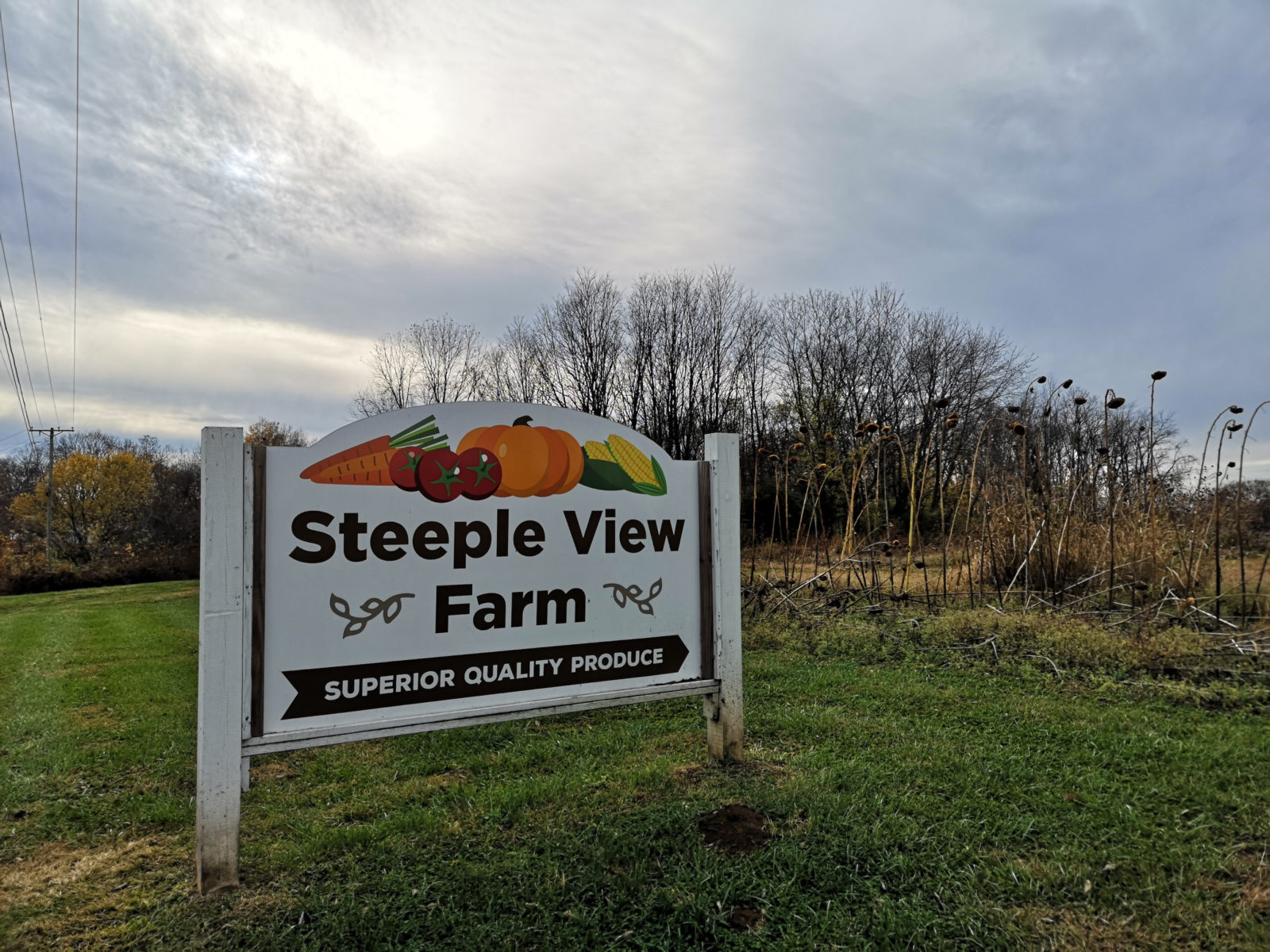
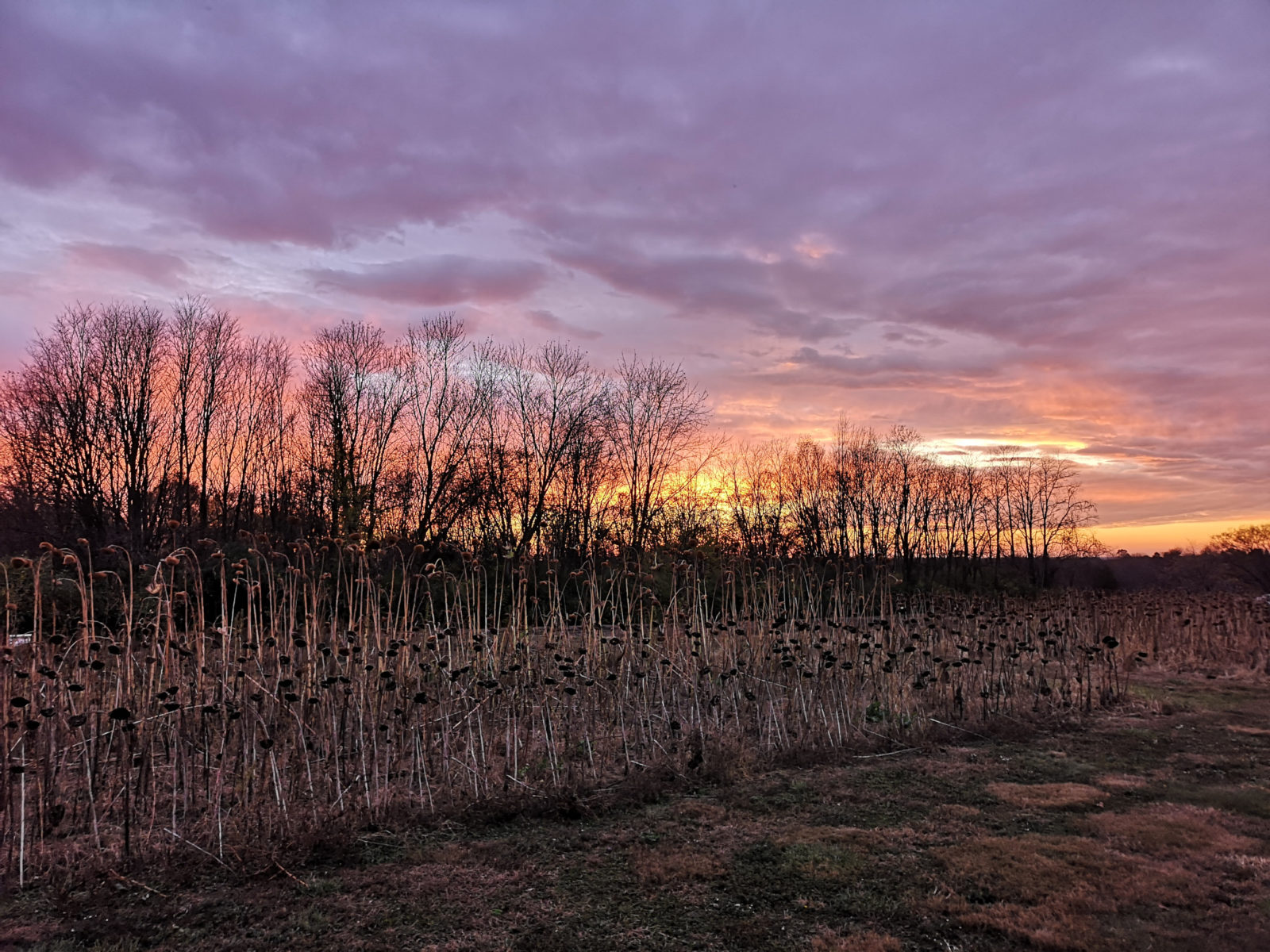

With all the bourbon they used in their products, we figured we should go find a bourbon distillery. We took a very scenic drive to the capital of Kentucky, Frankfort, where we went to the Buffalo Trace Distillery. Buffalo Trace is a national historic landmark and is the oldest continually operating distillery in America. We had no idea it was such a popular spot, maybe because they do free tastings!
We were told the tours book a month in advance, so we just did a tasting instead of doing one of the tours. We tried a vodka, three bourbons, a bourbon cream, and a root beer. They also had us save some bourbon cream to mix with the root beer to create a root beer float! They also gave a sample of their bourbon chocolate; Sharon managed to get my bourbon chocolate and an extra one from the host. My favorite was the Eagle Rare 10-Year-old Bourbon, but unfortunately, they had sold out in the gift store, so I couldn’t buy a bottle. The distillery is coming close to its 8,000,000th barrel filled since prohibition, and they were also one of only 2 distilleries authorized to make “medicinal” whiskey during prohibition!

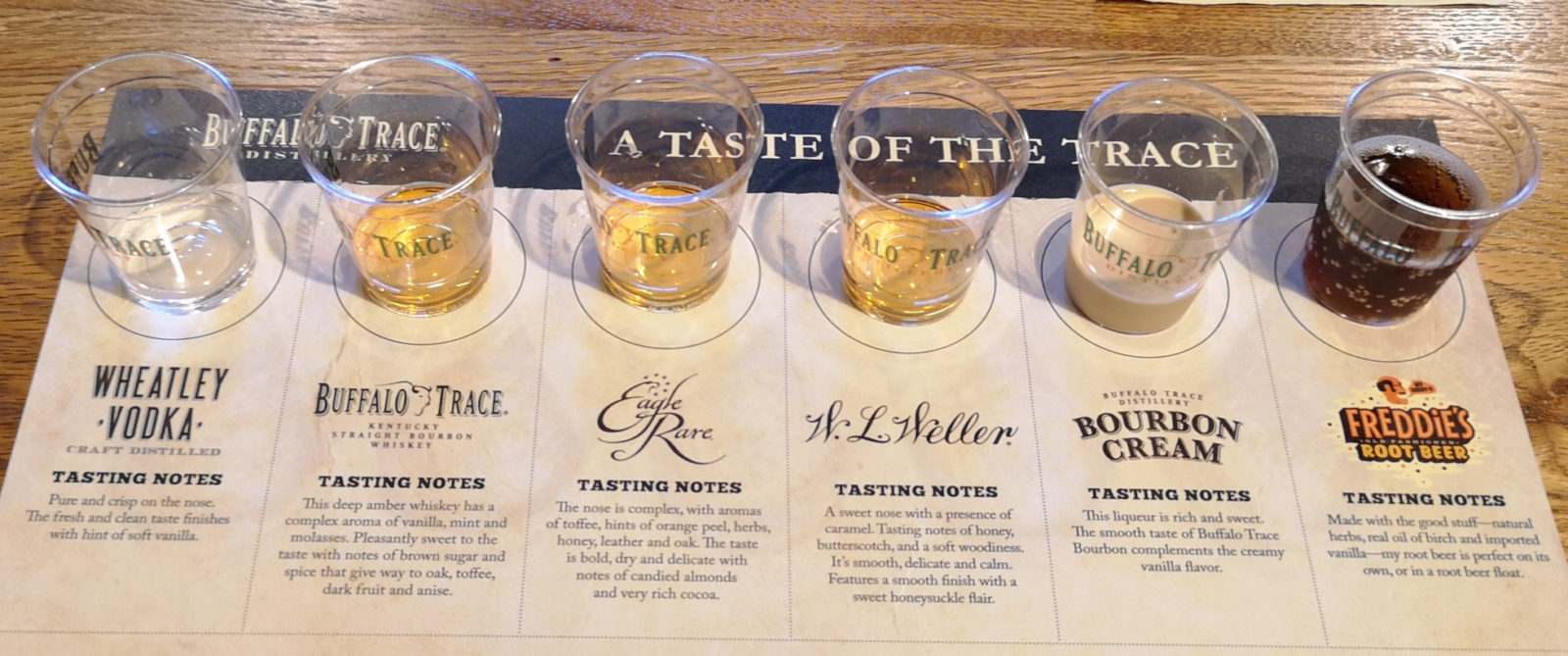
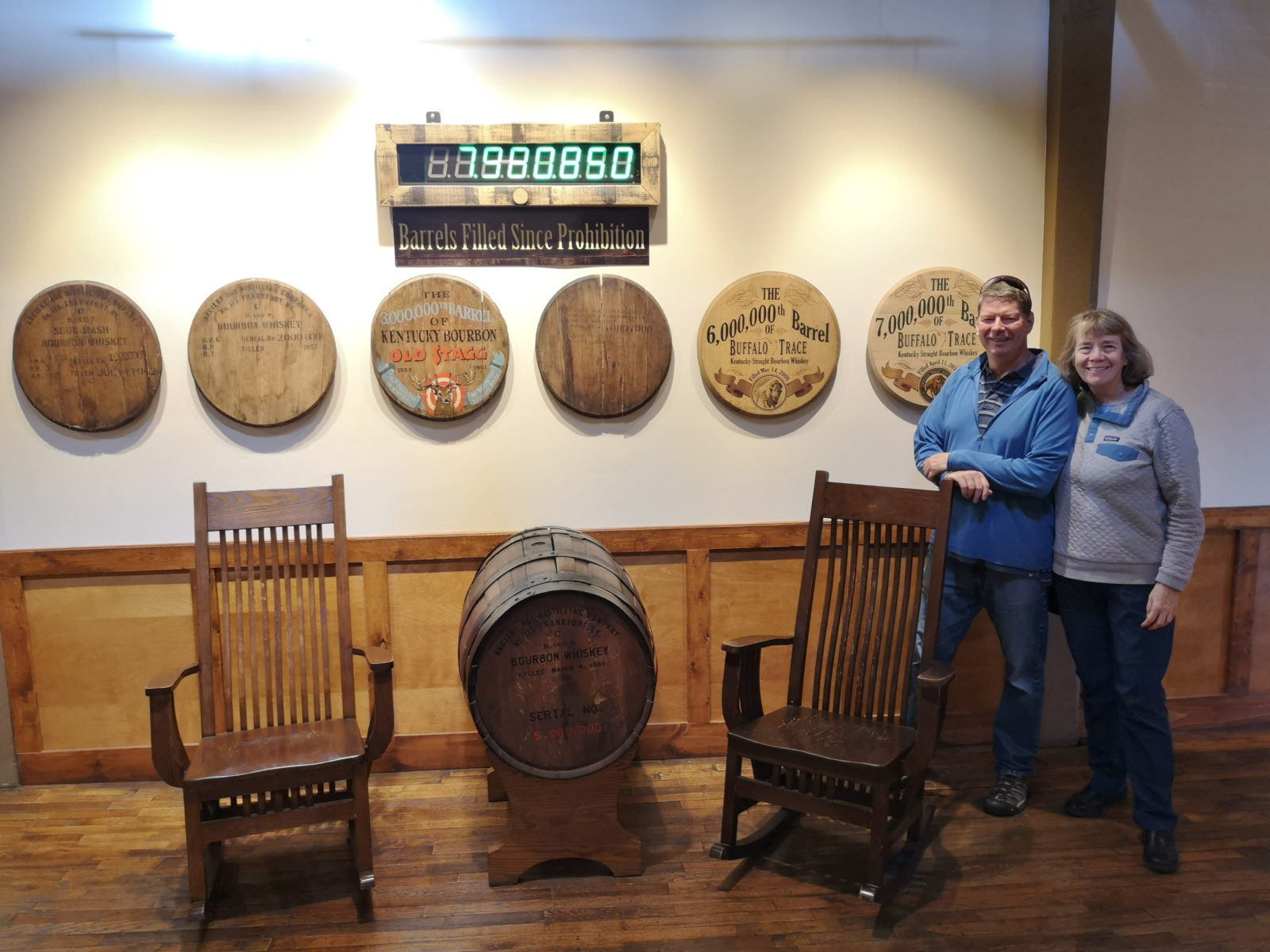
We decided to make a quick stop at My Old Kentucky Home State Park to have lunch. The best part of owning a Leisure Travel Van is that you can eat lunch anywhere. There is a mansion that was built between 1795 and 1818 in this park. The home was also the inspiration for the state song of Kentucky, “My Old Kentucky Home,” by Stephen Collins Foster in 1853. Due to timing, we didn’t take the guided tour inside the home, but we did walk around the grounds and see the old spring pump house. Judge John Rowan owned the home and was a senator who led amendments to the US judicial system and ended imprisonment for debt.
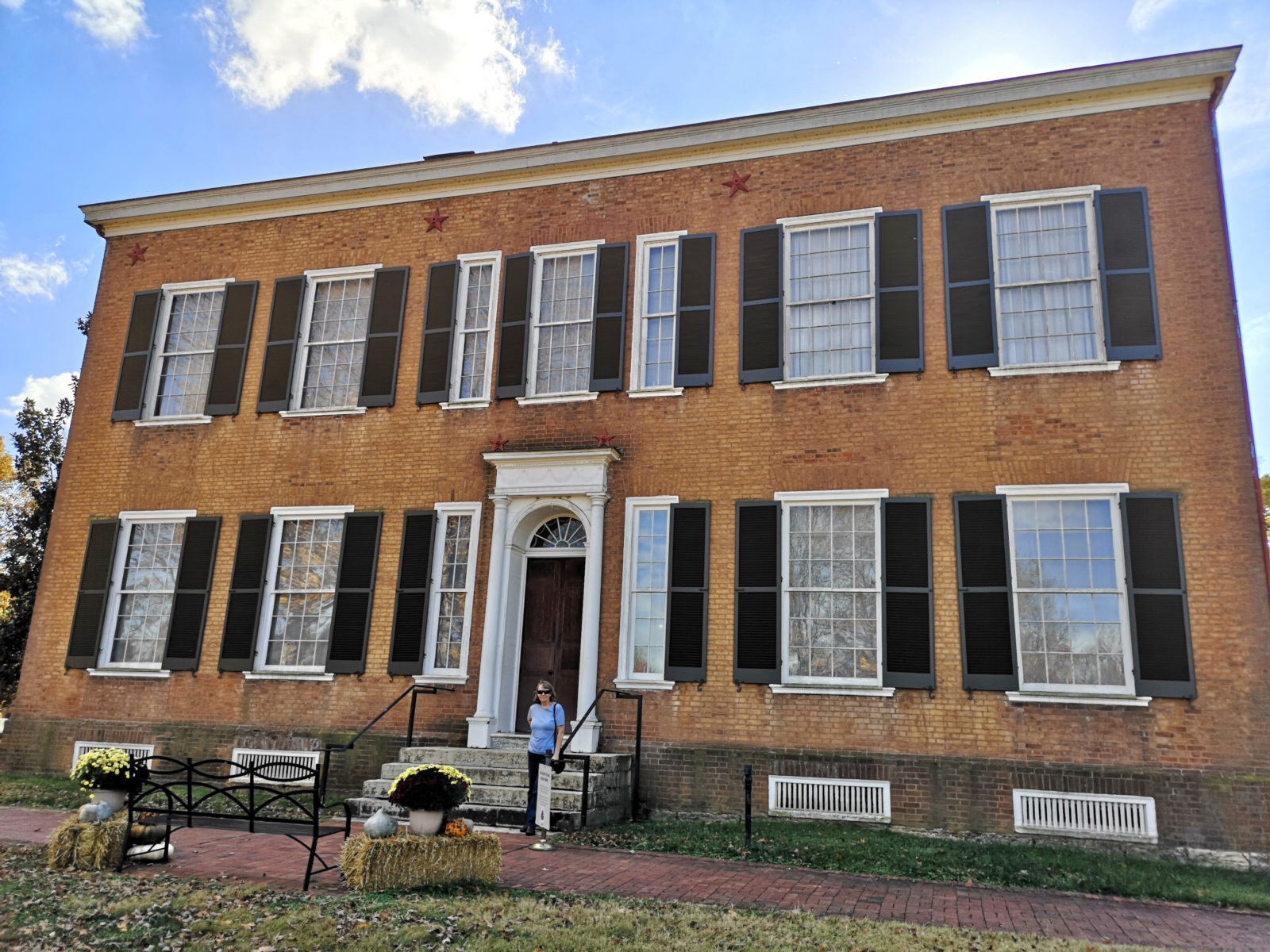
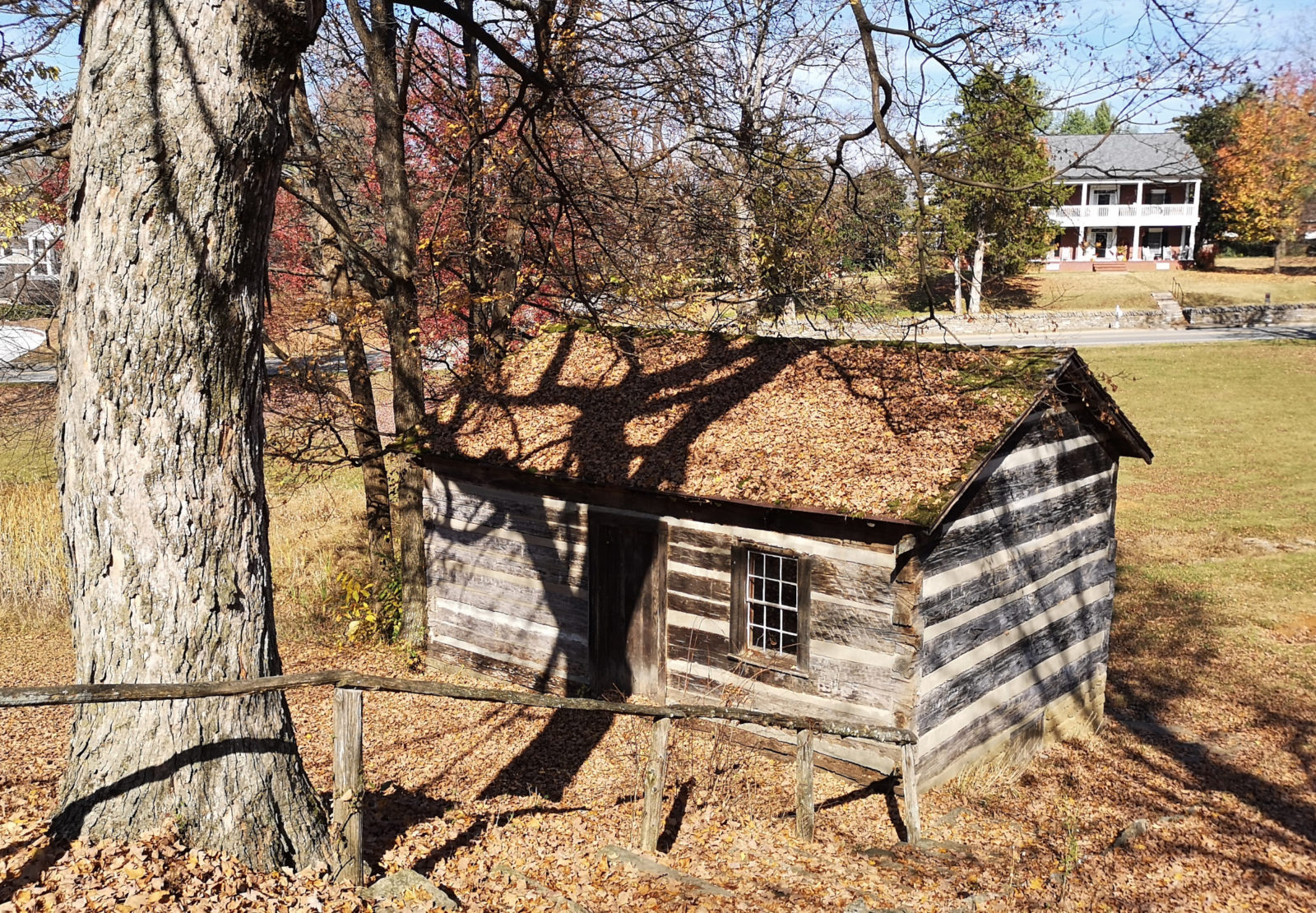
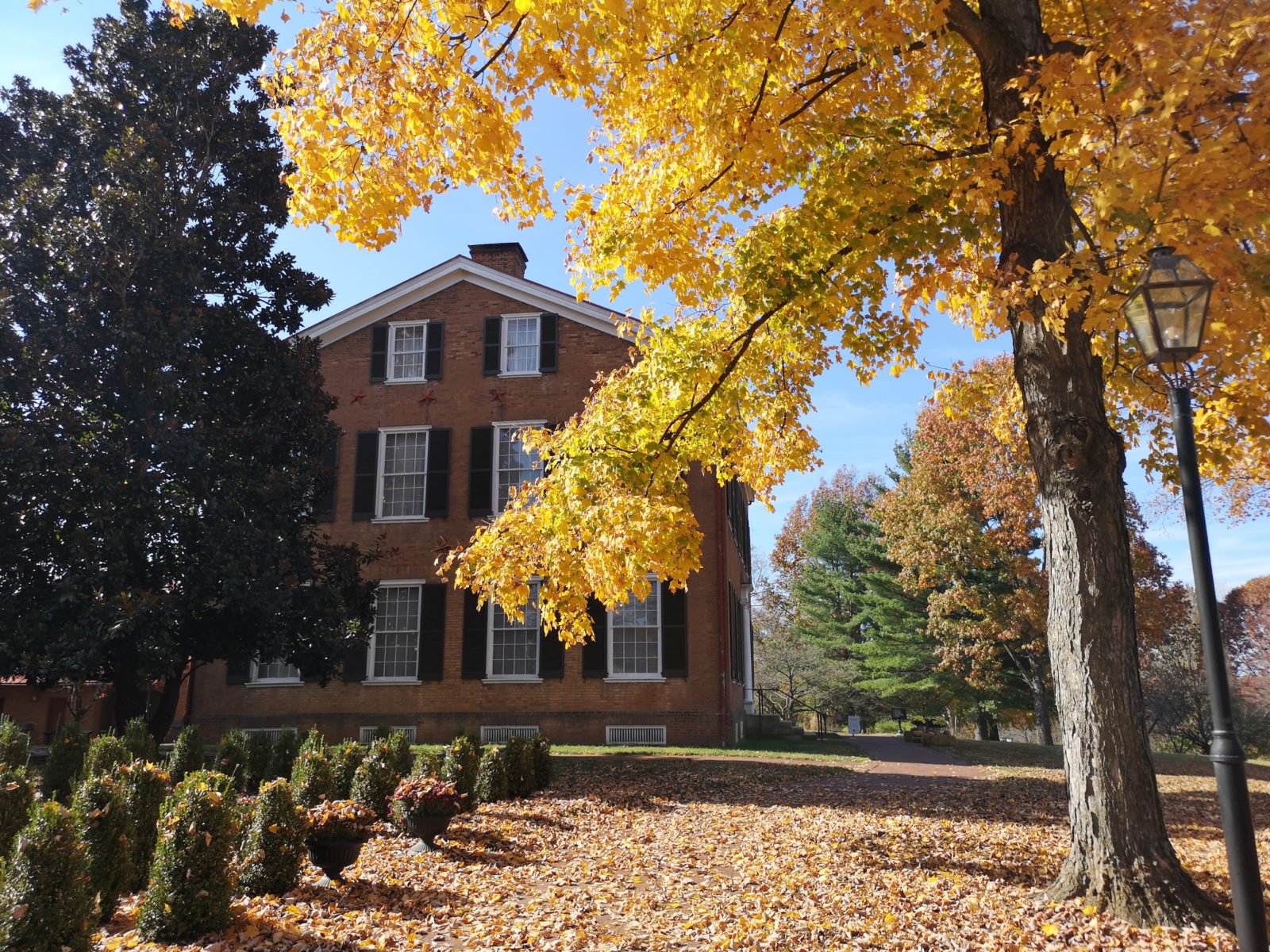
Continuing on, we visited Mammoth Cave National Park, and when we arrived, we got a nonservice campsite for 3 nights. Our nighttime temperatures were in the 50s and the daytime was in the 70’s so we really didn’t need hookups. After everything was set up, we walked over to see what cave tours we could book. Unfortunately, the 4-hour Grand Tour was already booked for the next 4 days so we opted for the 2-hour historical tour the next morning and the Wondering Woods tour in the afternoon.
Mammoth Cave is the worlds longest cave, with currently 426 miles (685 kilometers) of passageways mapped and they believe they will find even more connections. It’s very different than what you imagine as a cave because the sandstone layer on the top stops the water from dripping through the limestone to form stalagmites and stalactites. Instead, the underground water carves out long passageways of various shapes. After viewing the exhibits in the visitor’s center, we headed back to our campsite and on the way saw one of the last trains that used to bring people to the caves starting in 1886 (it ran for 50 years) and some deer foraging for dinner.
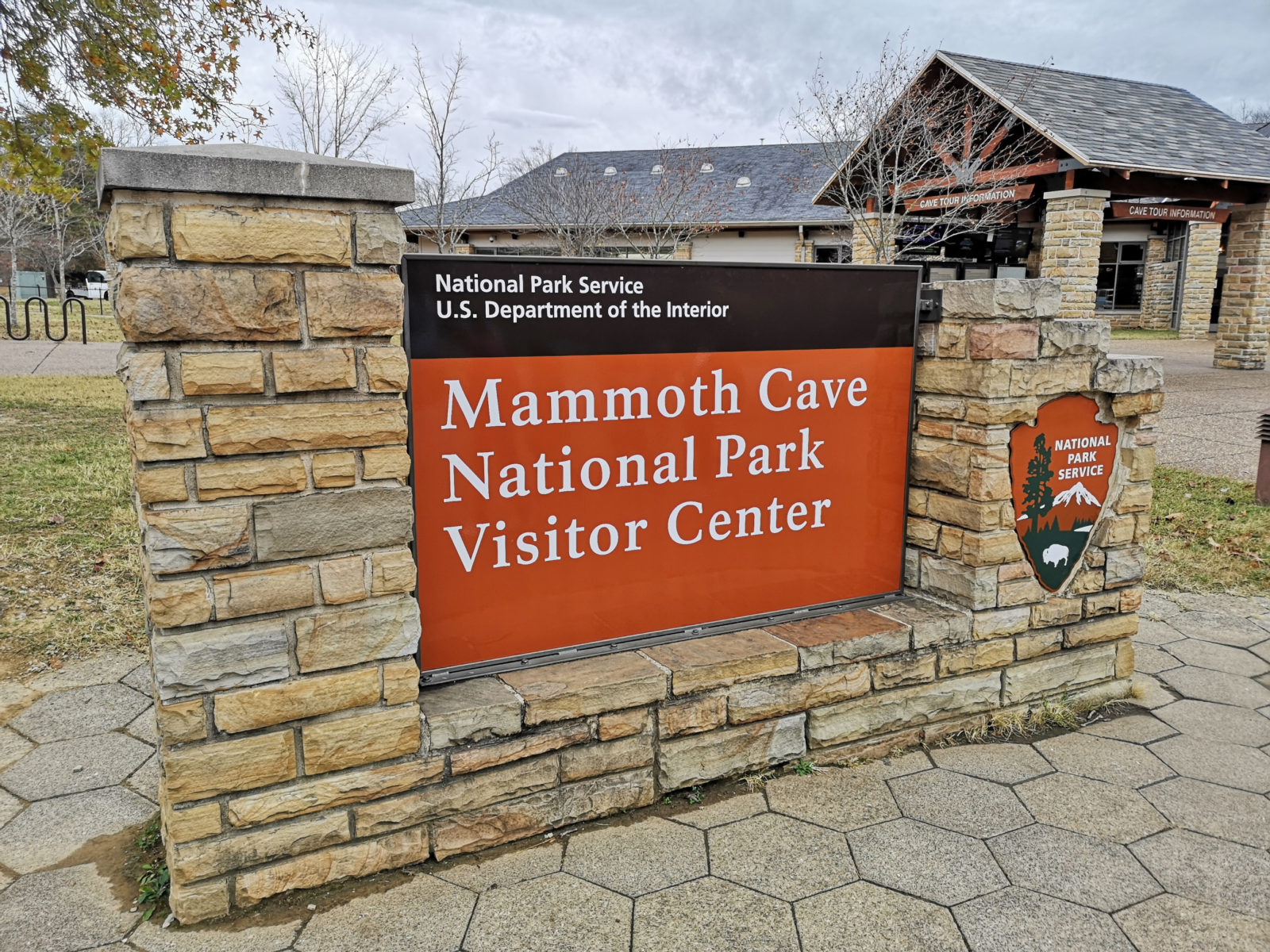
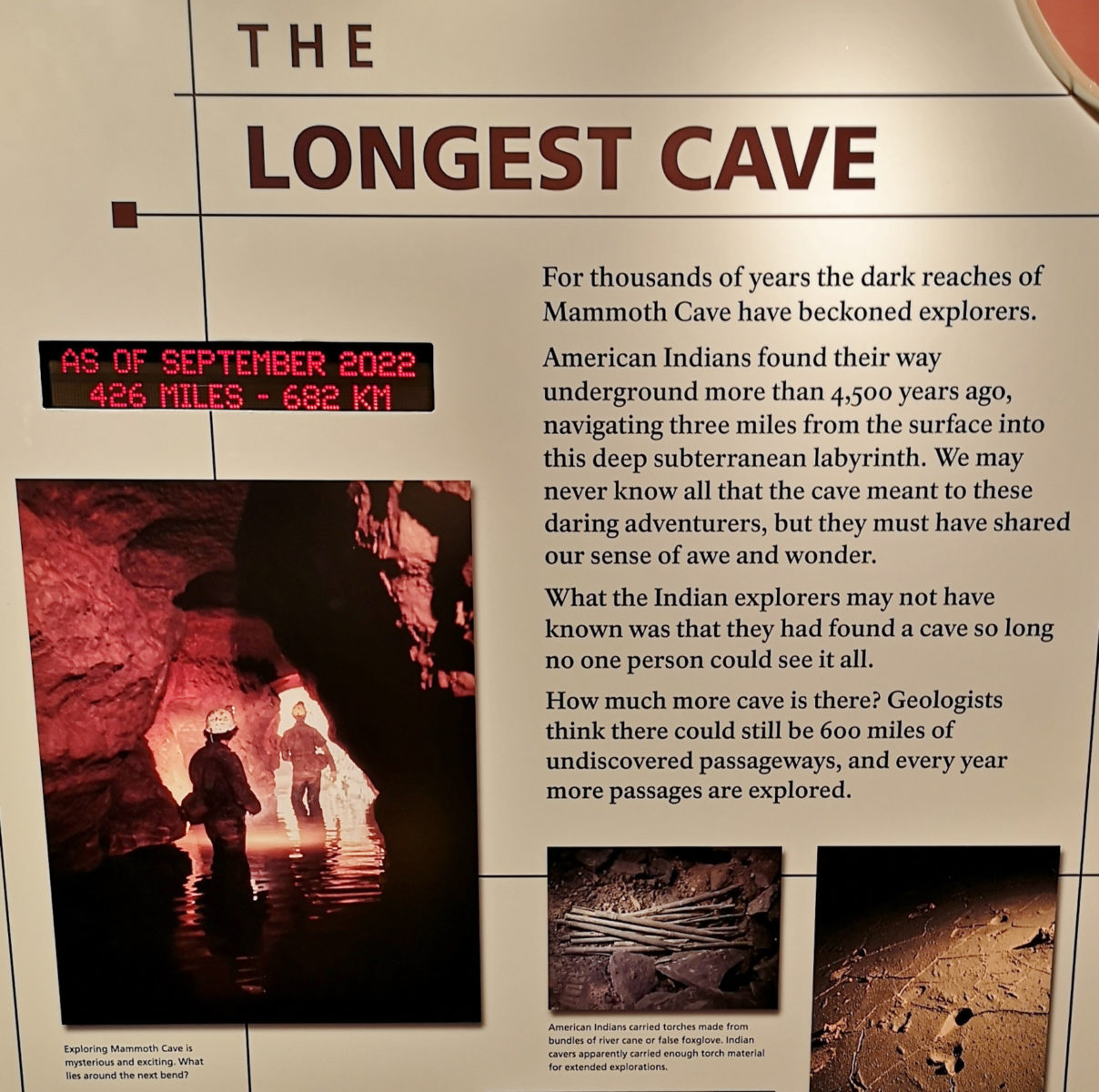

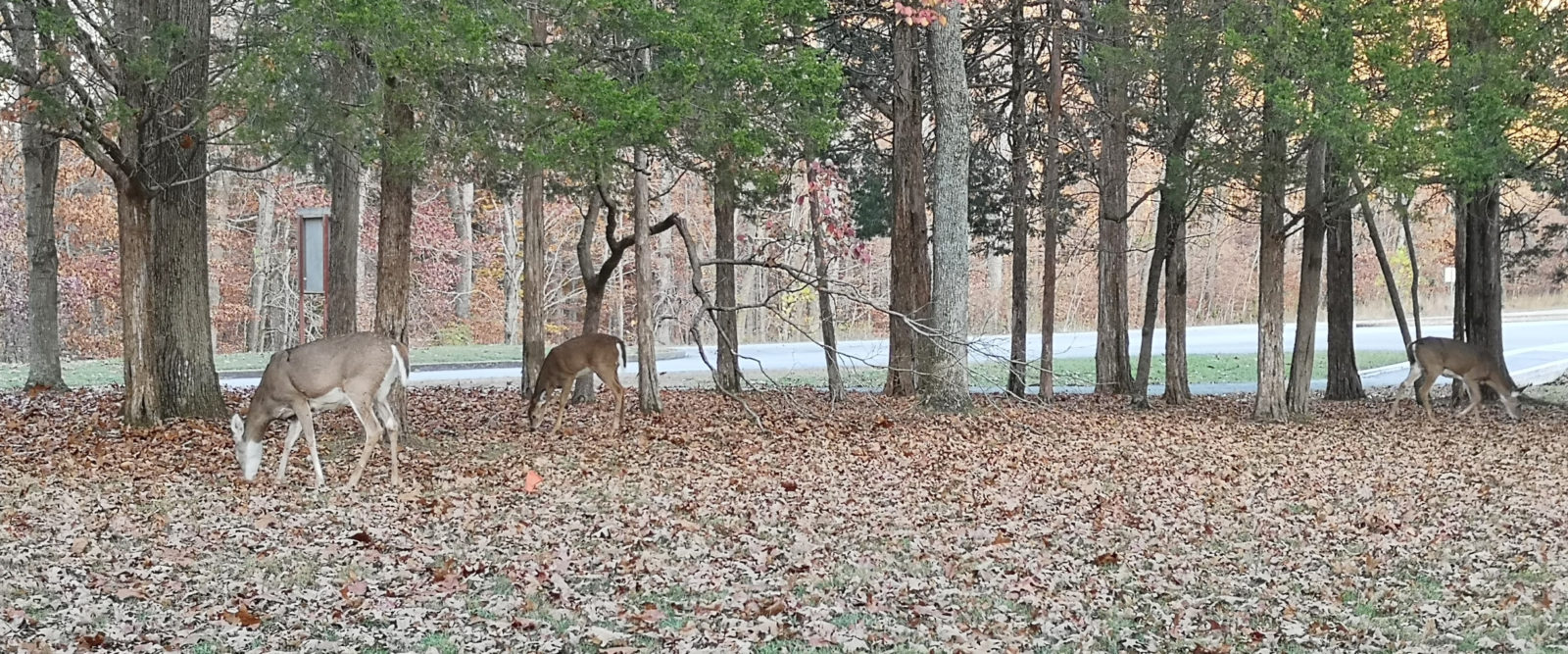
Our 2-hour historic tour was listed as moderate difficulty as you had to climb 540 stairs (the ranger said it was equivalent to climbing a 31-story building). Upon booking, we didn’t know that they had sold out the tour, so there were close to 140 people! It was truly a ridiculous number to try to keep together. If you stopped to take photos, you would get shuffled to the back and we were literally running to catch up with the group in the next area where the ranger did his historic talks. We talked to some other people who had done the tour the previous day in the afternoon and had only 30 people on it, so later in the day tours might be better. Here are some of the facts we learned about the cave:
- In the Rotunda area, there were saltpeter production hoppers used from 1798 through 1815. Saltpeter was a key ingredient for making gunpowder.
- We saw the huge boulder named Giant’s Coffin, which is 175′ below the surface.
- Native Americans 4500 years ago used river cane torches to explore the cave.
- A visitor described fat Man’s Misery (264′ below the surface) in 1866 as “a tortuous rift, a snake in convolution and an avenue of torture in ruggedness, narrowness, and lowness. It would perplex a groundhog.”
- In 1842, Dr. John Croghan set up a sanitorium in the cave, thinking the environment could cure Tuberculosis, but it failed, so it was closed in 1843.
- There are 8 species of bats in the caves; we believe the ones we saw were Little Brown Bats. The population has dramatically dropped due to white-nose syndrome.
- Visitors started coming to the cave in 1812, the CCC started building park infrastructure in 1933, and the National Park was established in 1941, in 1981 it was named a World Heritage site, and in 1990 it was named a World Biosphere Reserve.
The cave was different from other caves we had been to but worth visiting.
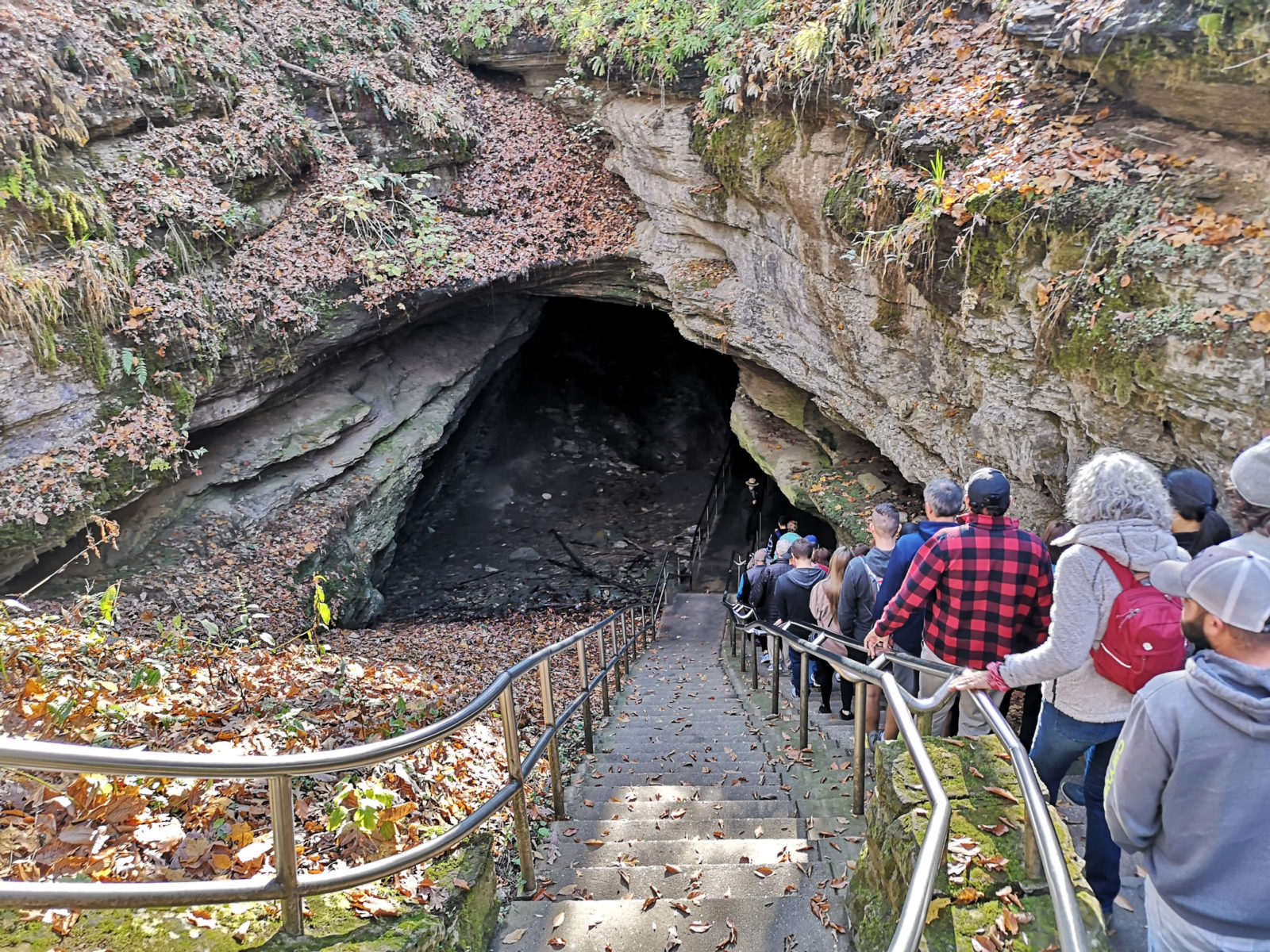
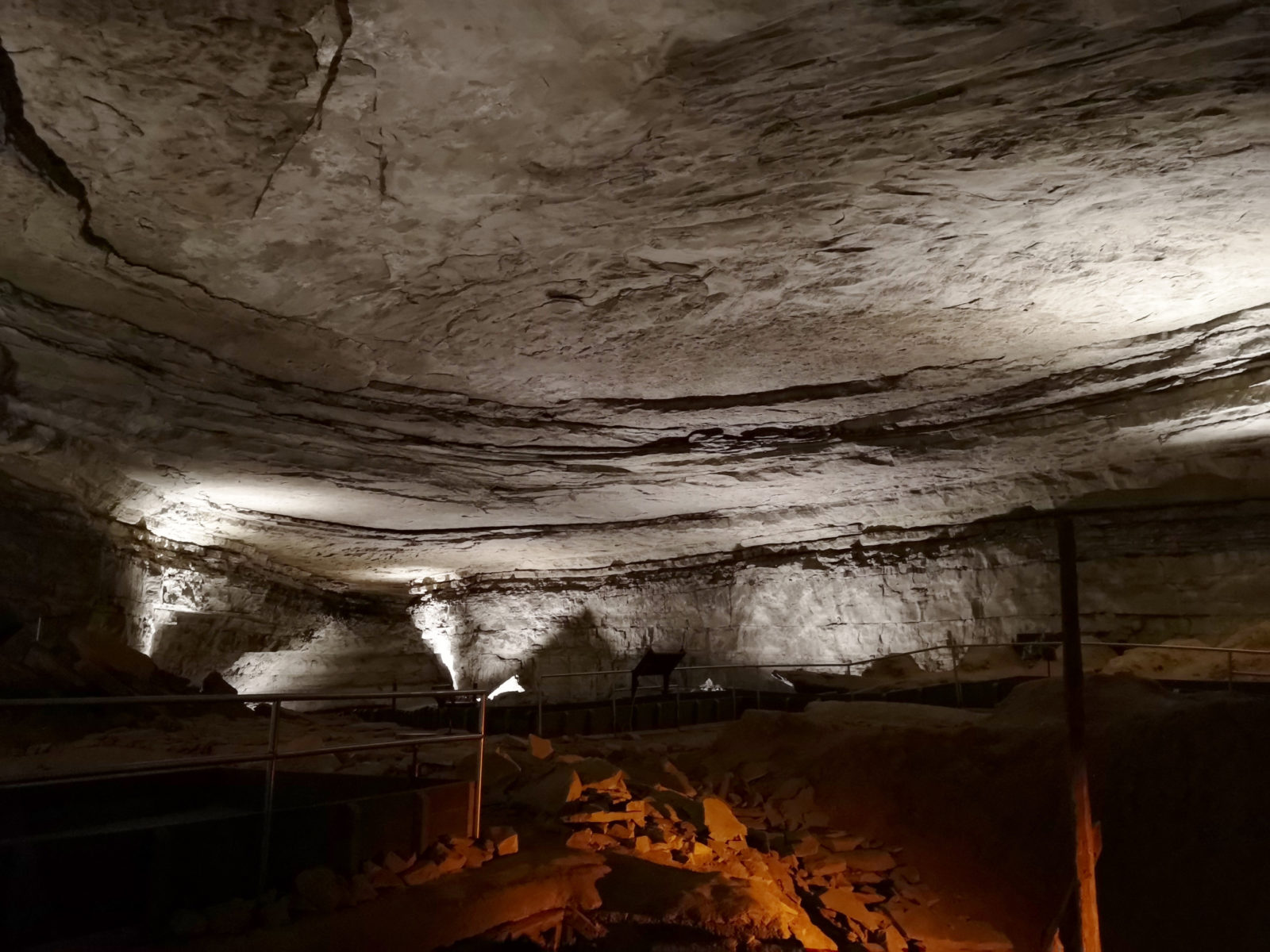
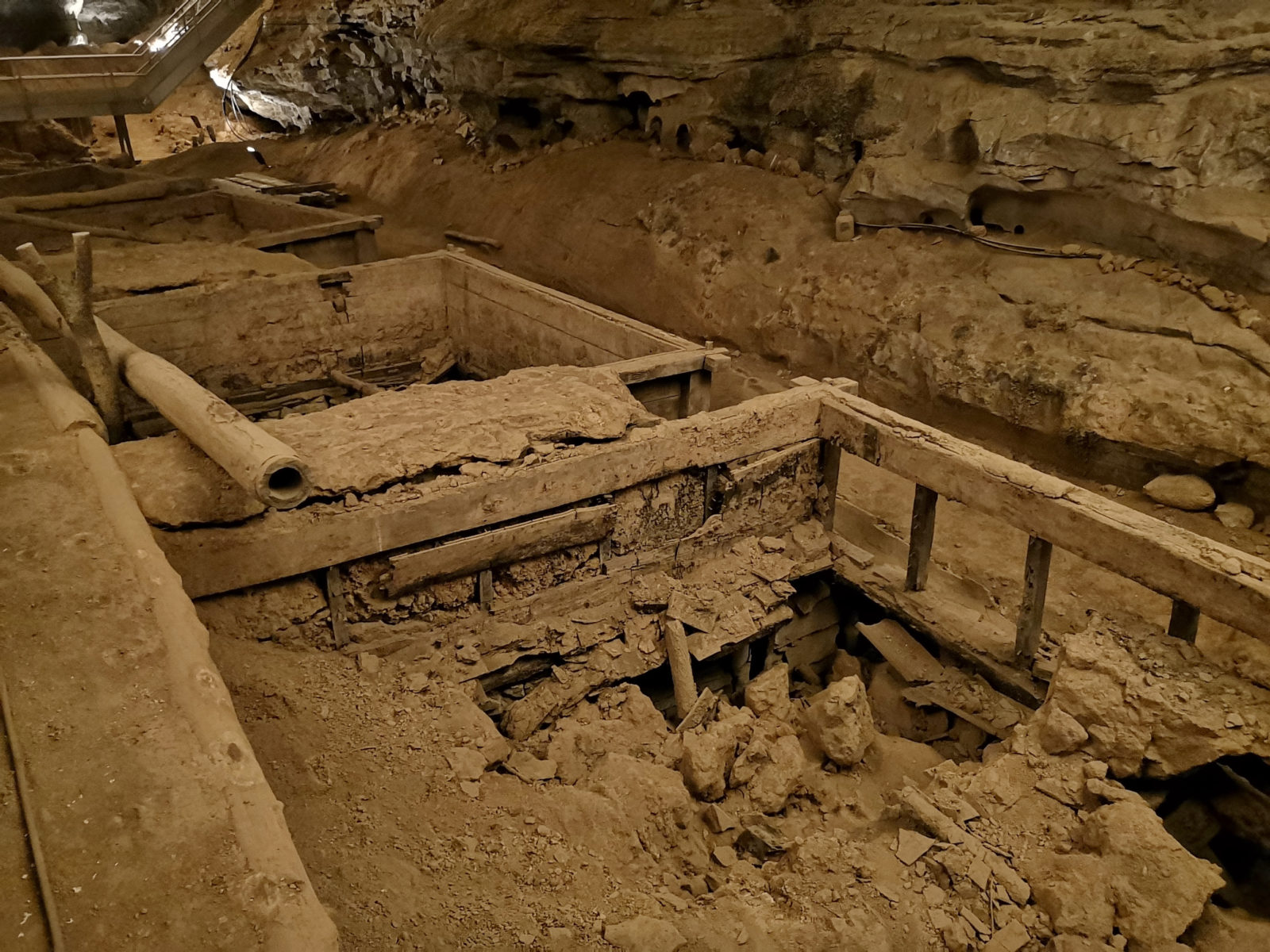
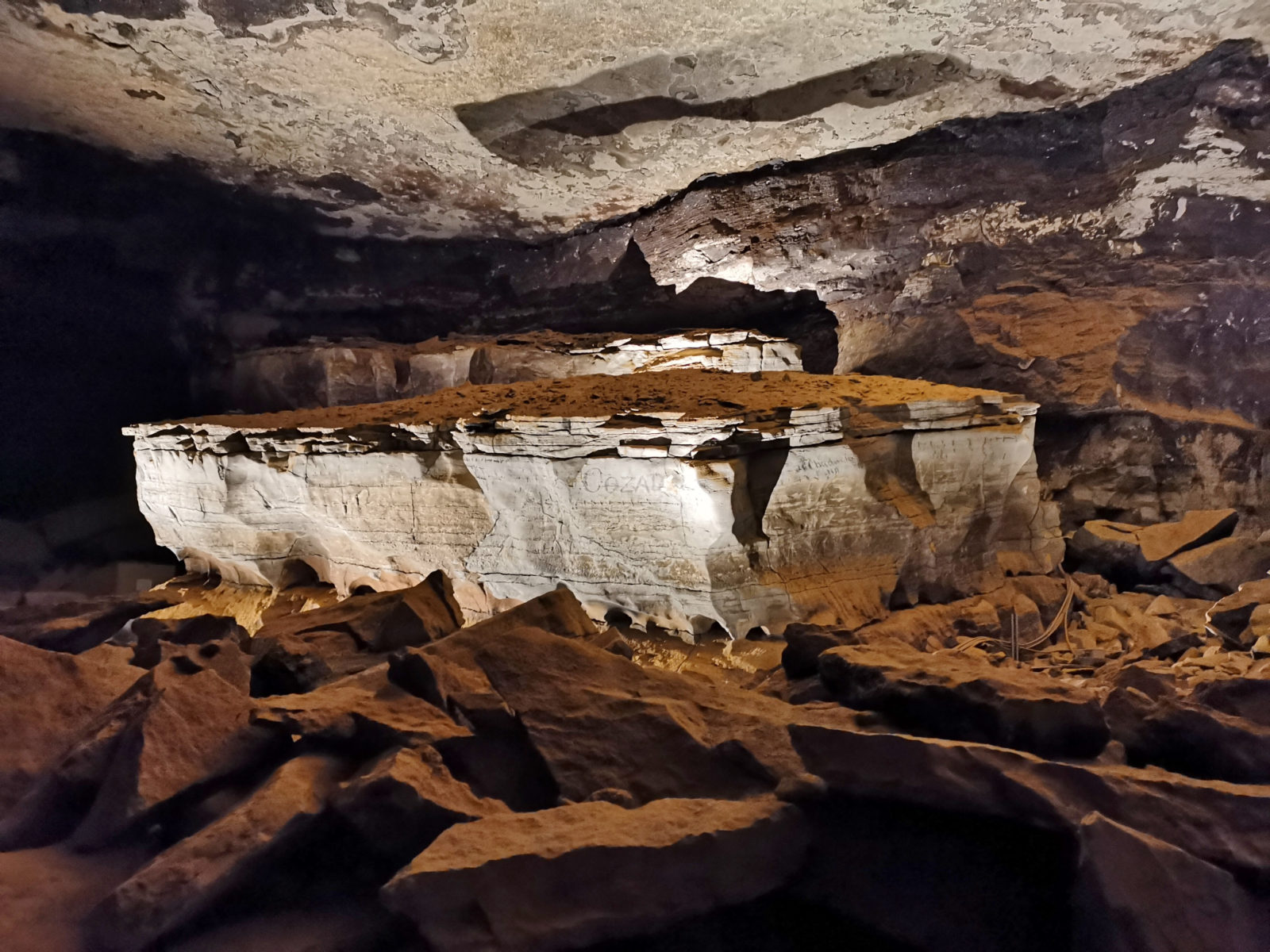
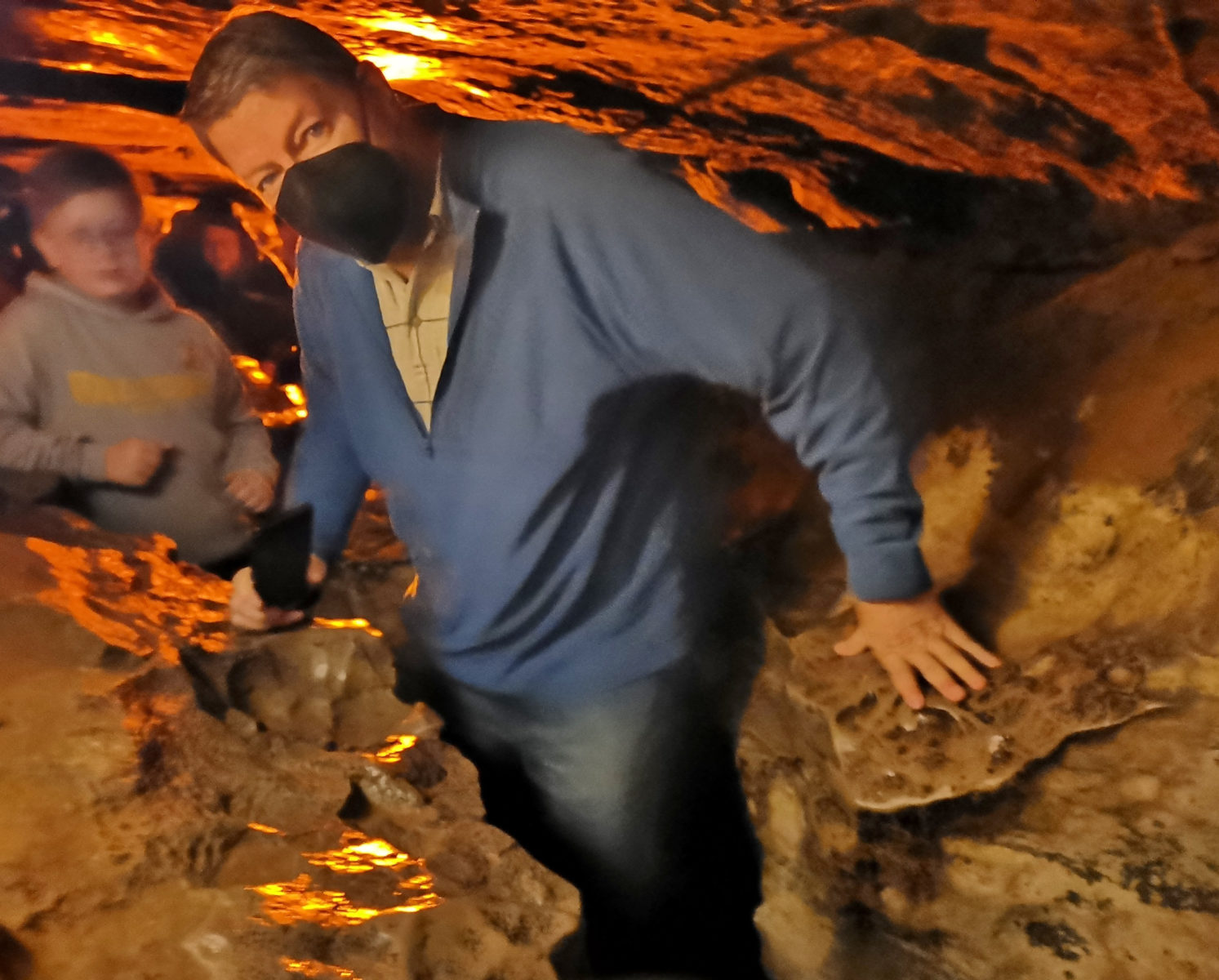

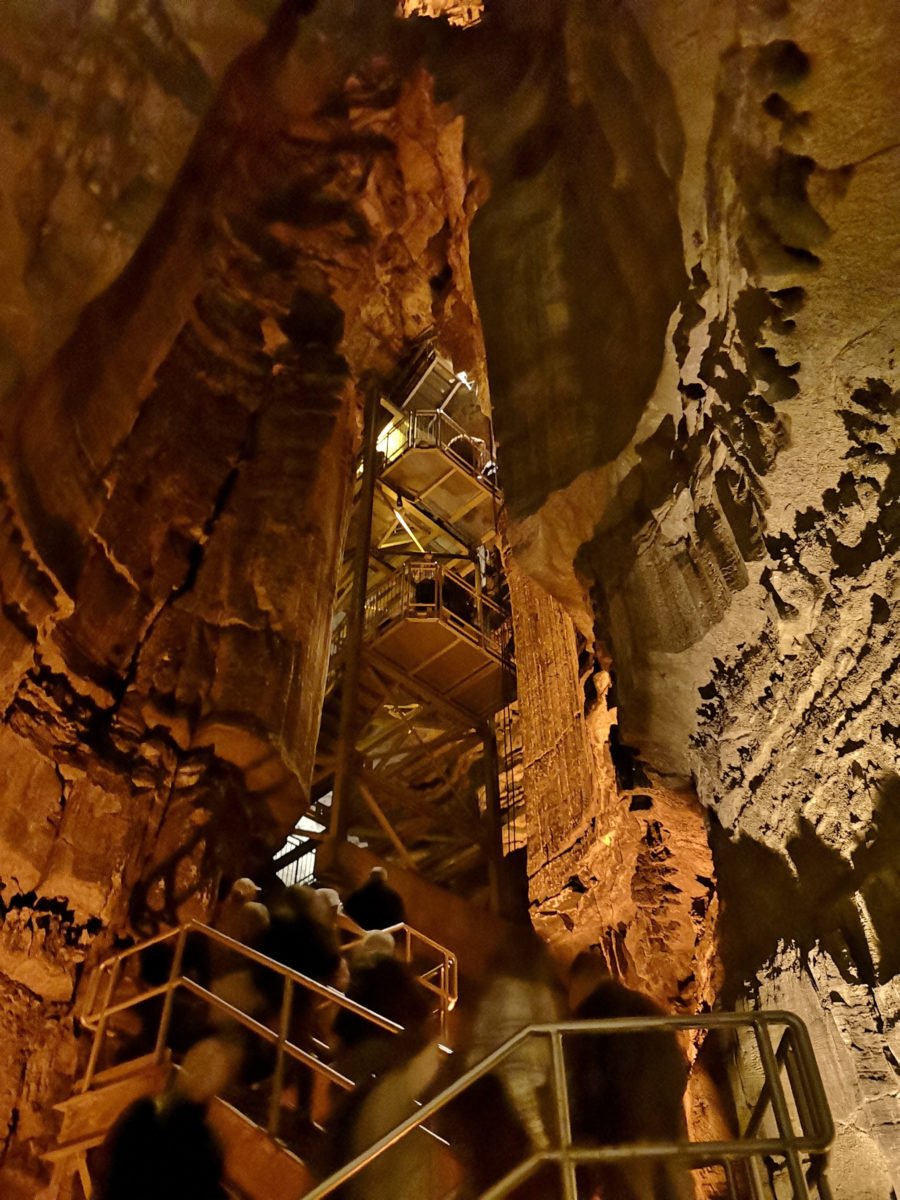
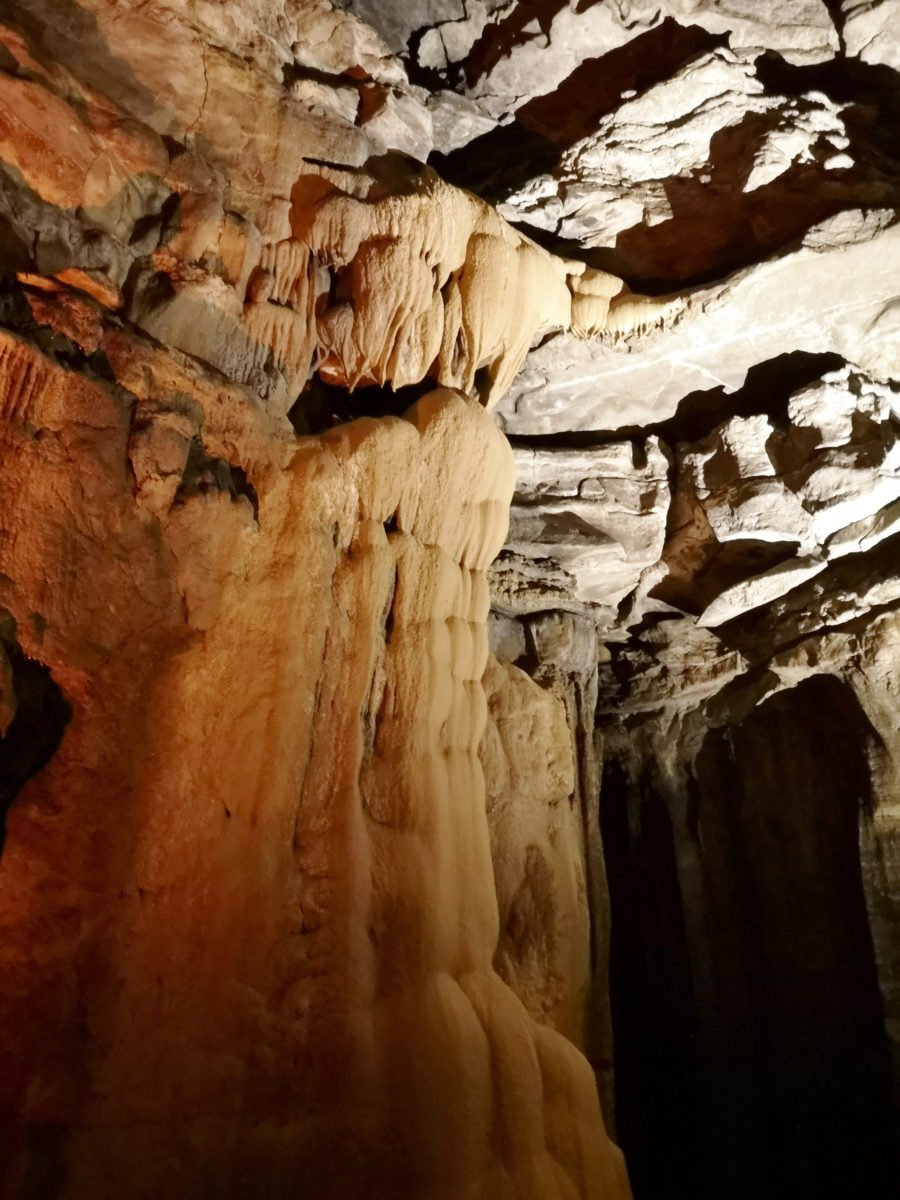
In the afternoon, we did the Wondering Woods tour. This tour only had 7 people plus the guide, so a much better-sized group. We took a 25-minute bus ride where the guide gave the area’s history, including the cave wars. In the earlier days, there was a competition to have people tour your specific cave. Later the park service started buying up properties and farms from the locals, and a lot of animosities were created towards the park due to the tactics that were used to obtain the 53,000 acres of land.
This tour has not been offered very long and was just run now due to the closure of one of the other tours. In the cave, we saw another little brown bat and several cave crickets, but the unique part was all the formations in the cave. There were flows, stalactites (c for close to the ceiling), stalagmites (g for growing from the ground), crystal formations, soda straws, and shawls! The other cool thing was that you could see from one end of the cave to the other. On the way back in the bus the guide told us the story of Floyd Collins who was a local cave guide that got stuck in Sand Cave for two weeks but unfortunately perished. It was a national news story at the time.

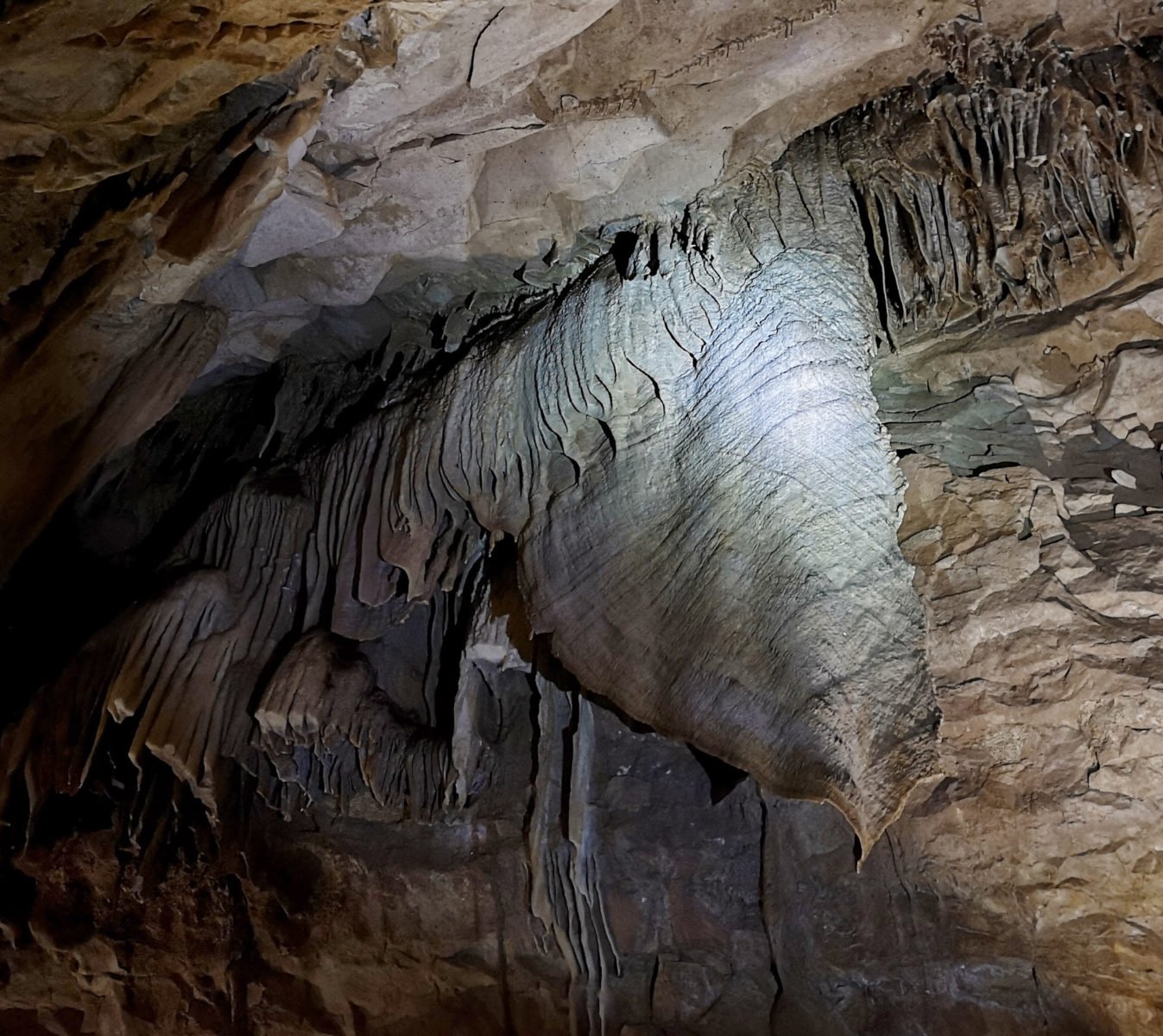
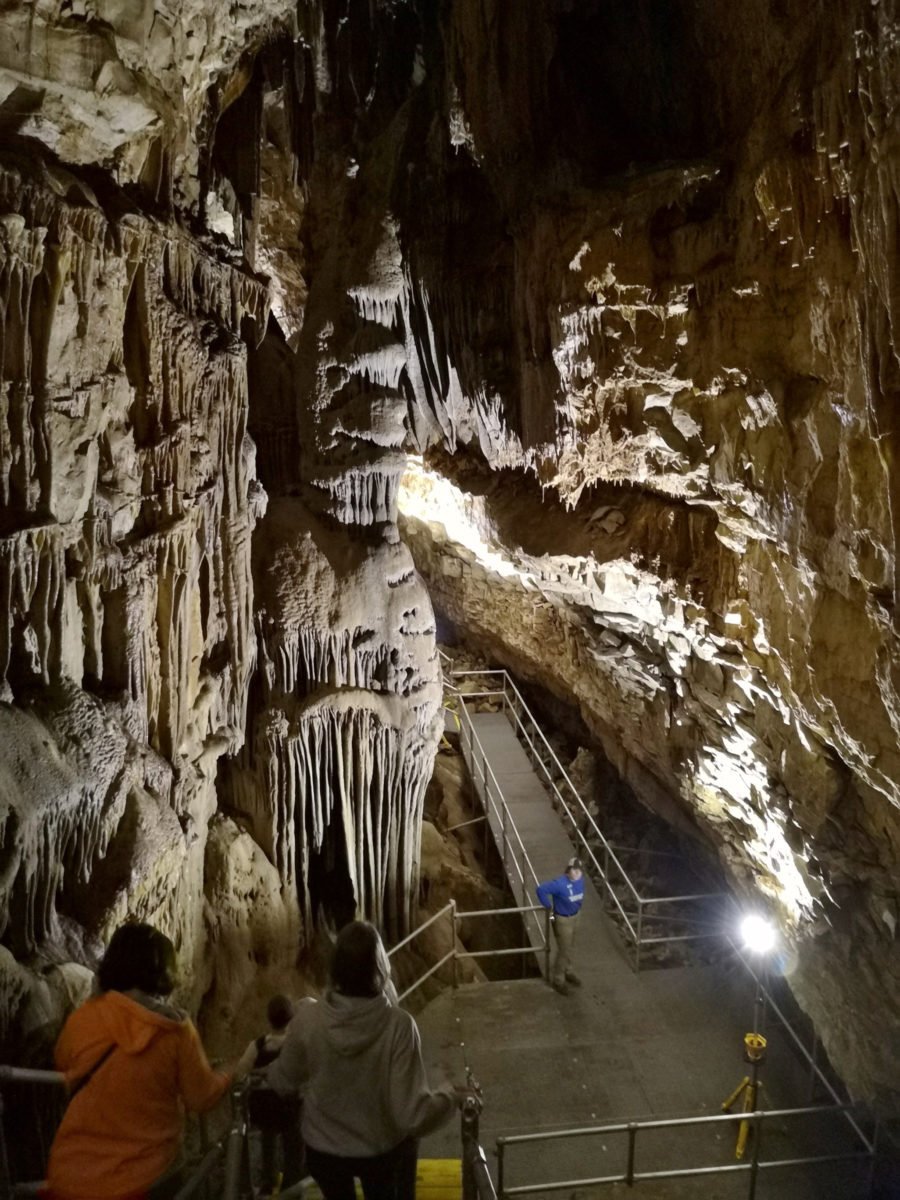

On our third day at the park, we had perfect weather for our bike ride along the old Mammoth Cave Railroad trail. It was a nice trail but did have a few very steep hills. That’s when you take the opportunity to enjoy nature and hike your bike up the hill 😉.
One of the first overlooks was Doyle Valley which was just on the edge of the Appalachian Mountains, so it created quite a challenge for the railway. They built a trestle in 1886, and it was finally demolished in 1961. This valley was mainly farmland before the park reverted it to a forest.
Our next stop was Sloan’s Crossing Pond which was a depression in the sandstone layer above Mammoth Cave where the water could pool, creating a wetland. We passed by the Dripping Springs Escarpment, where you could see the layers of sandstone and limestone, and then proceeded down a really long hill (down is fun, up not so much) until we went by Diamond Caverns. We finally made it to the entrance sign and carried on to Park City so we could see the ruins of Bell’s Tavern, where we had lunch. Then we retraced our route all the way back to the campground for a total of 28 kilometers (17 miles).
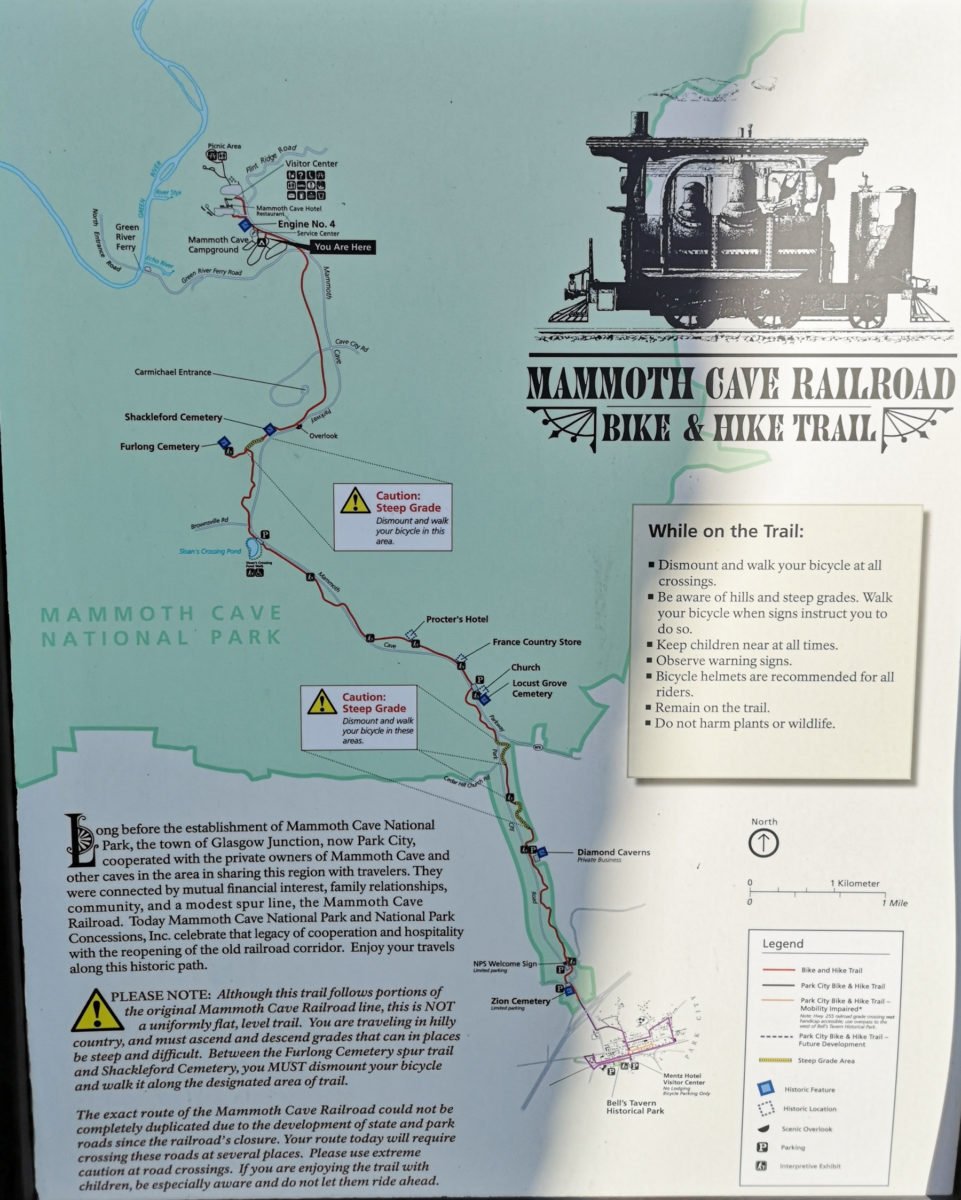

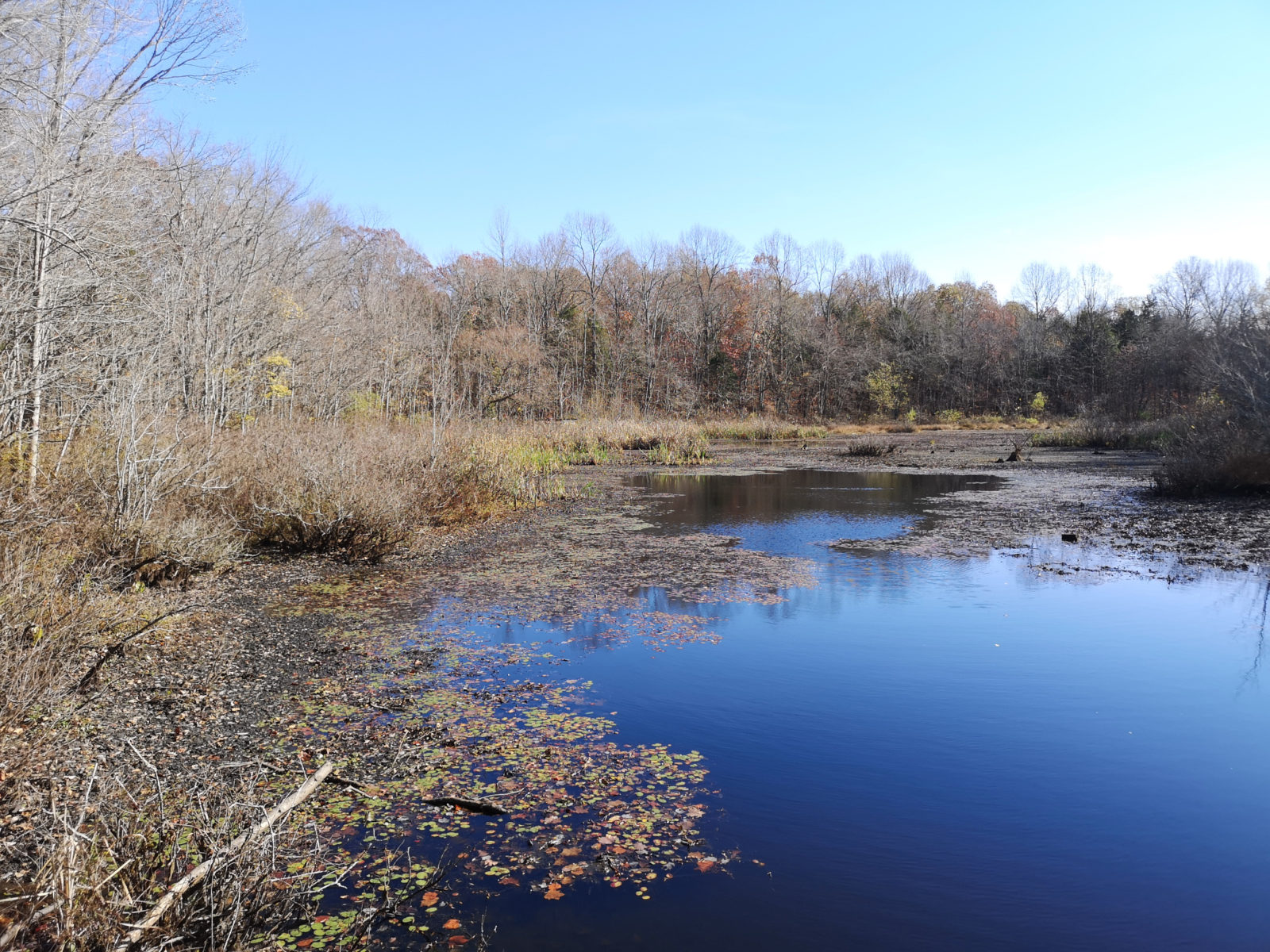
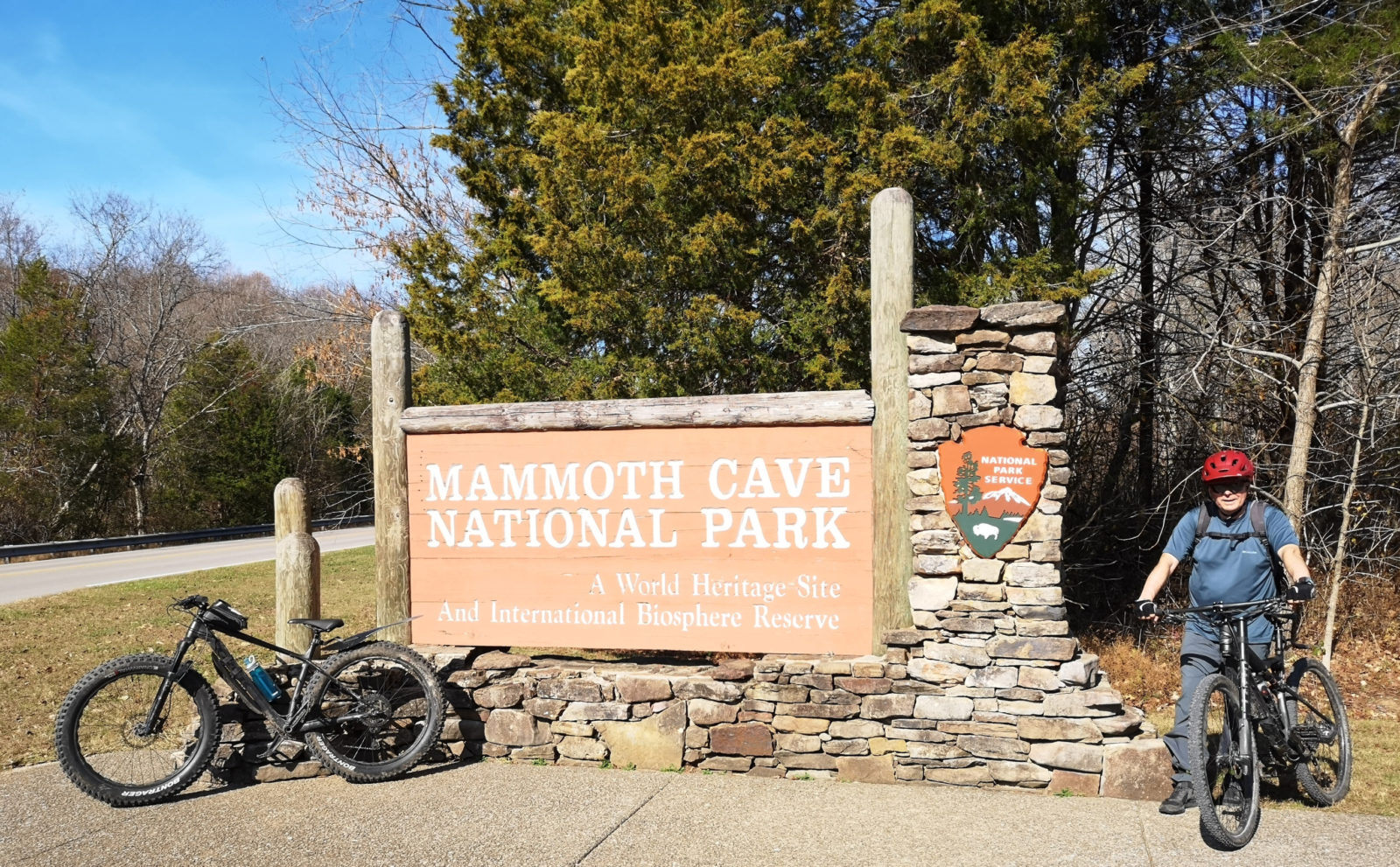
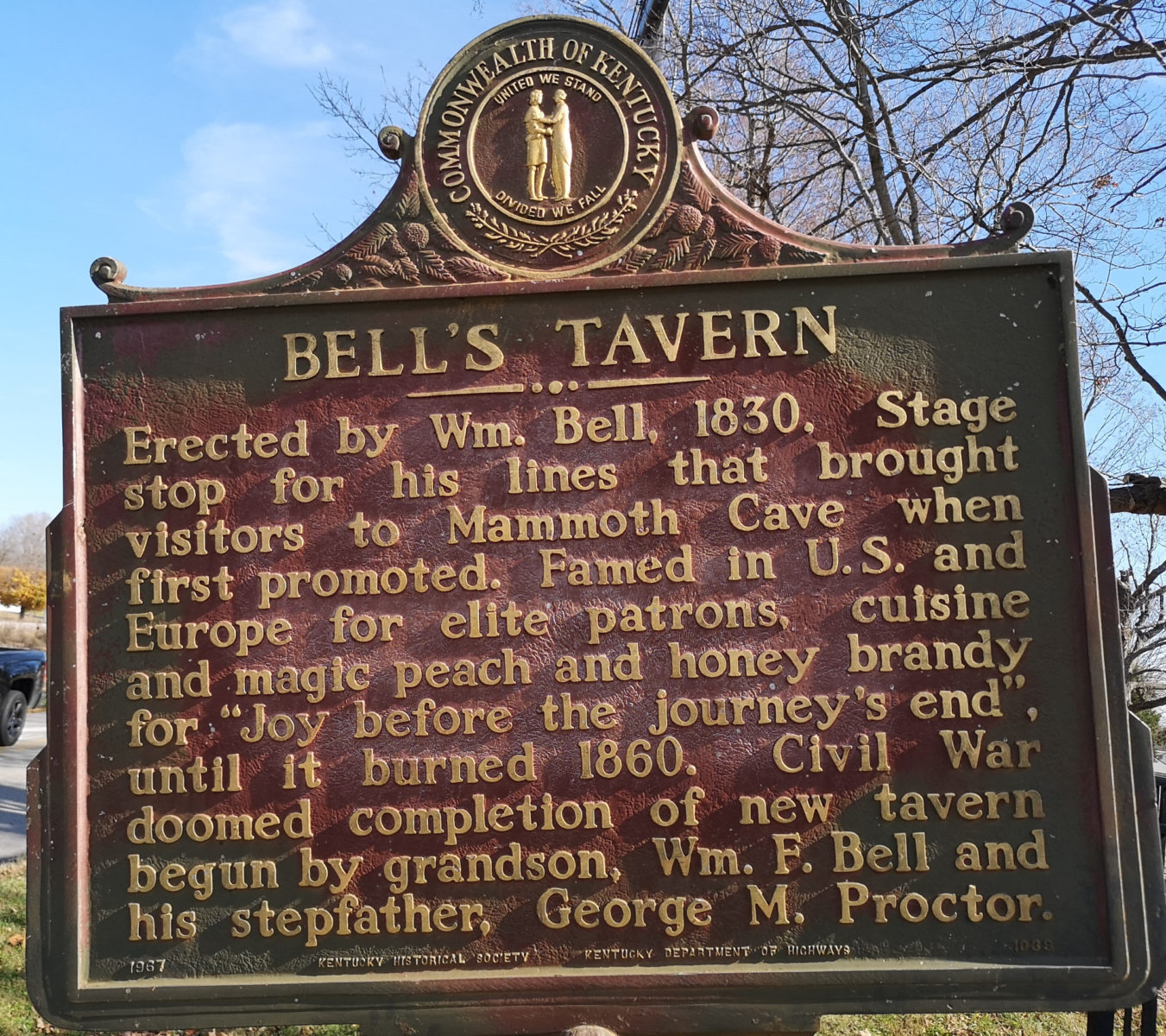
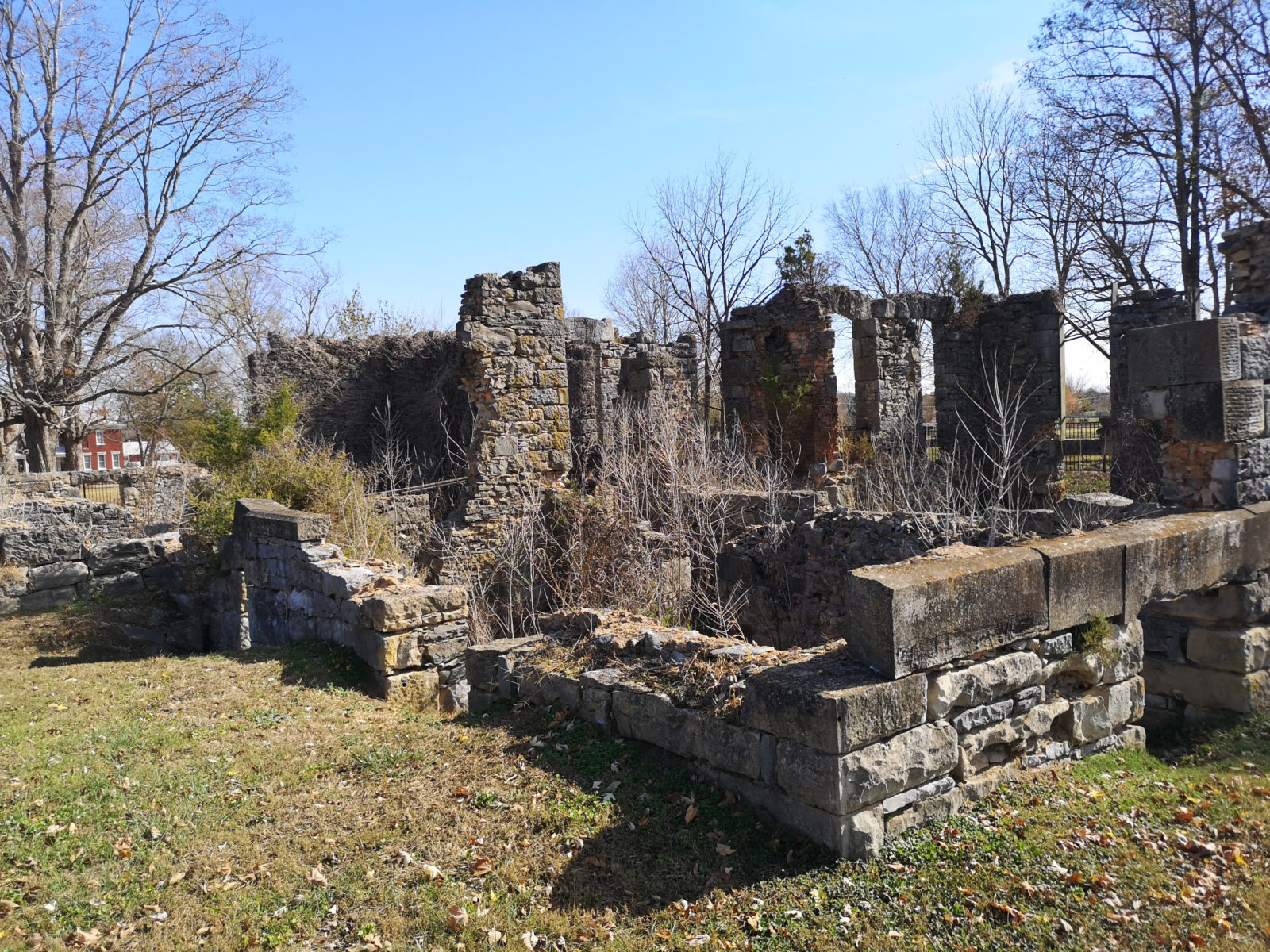
The next destination was Land Between Two Lakes, but on the way, we stopped in Central City, Kentucky, to get some groceries, and we found out the town had an Everly Brothers monument. Since Sharon’s Dad liked the Everly Brothers, we decided to get some photos at the monument.
Still, then it had a really good small museum with musical artifacts about the Everly Brothers, Merle Travis, Jim Walker, and John Prine, all of who were from the area. The museum was in an old car dealership. The music museum is in the front/sales area, and some historical cars are in the garage bays. It was definitely worth the stop, especially since the host was extremely friendly and gave us all kinds of stories about the area.
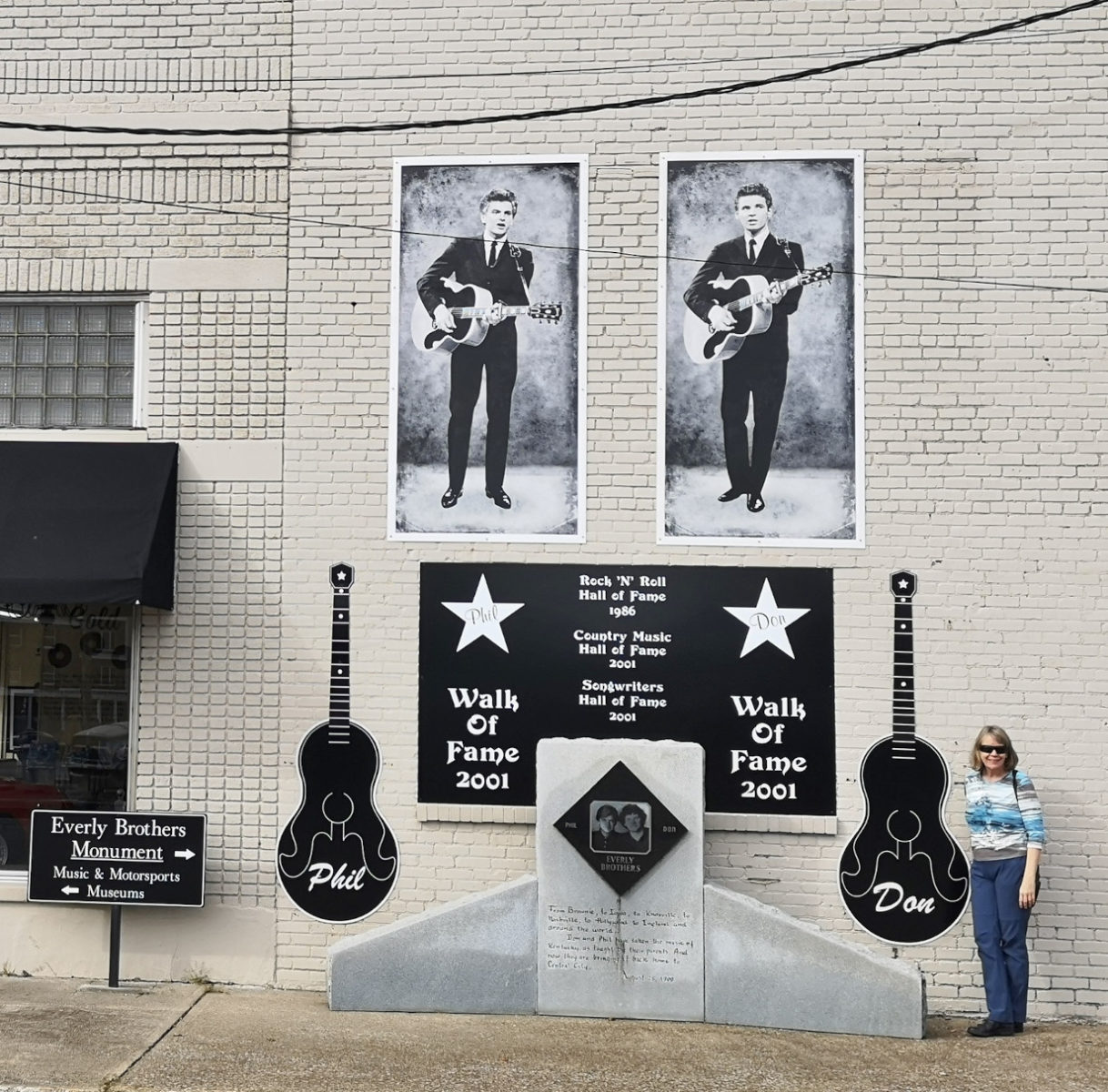
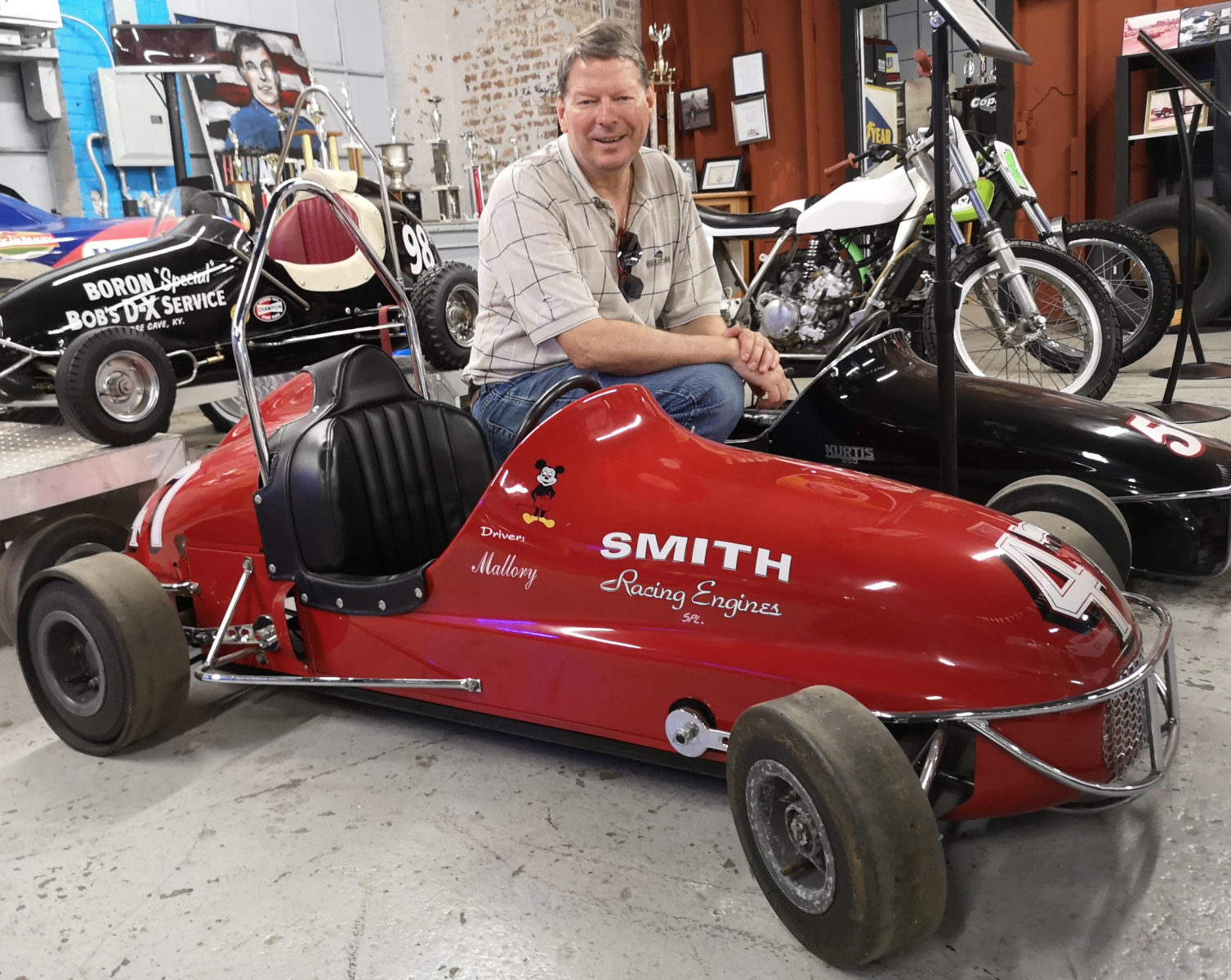
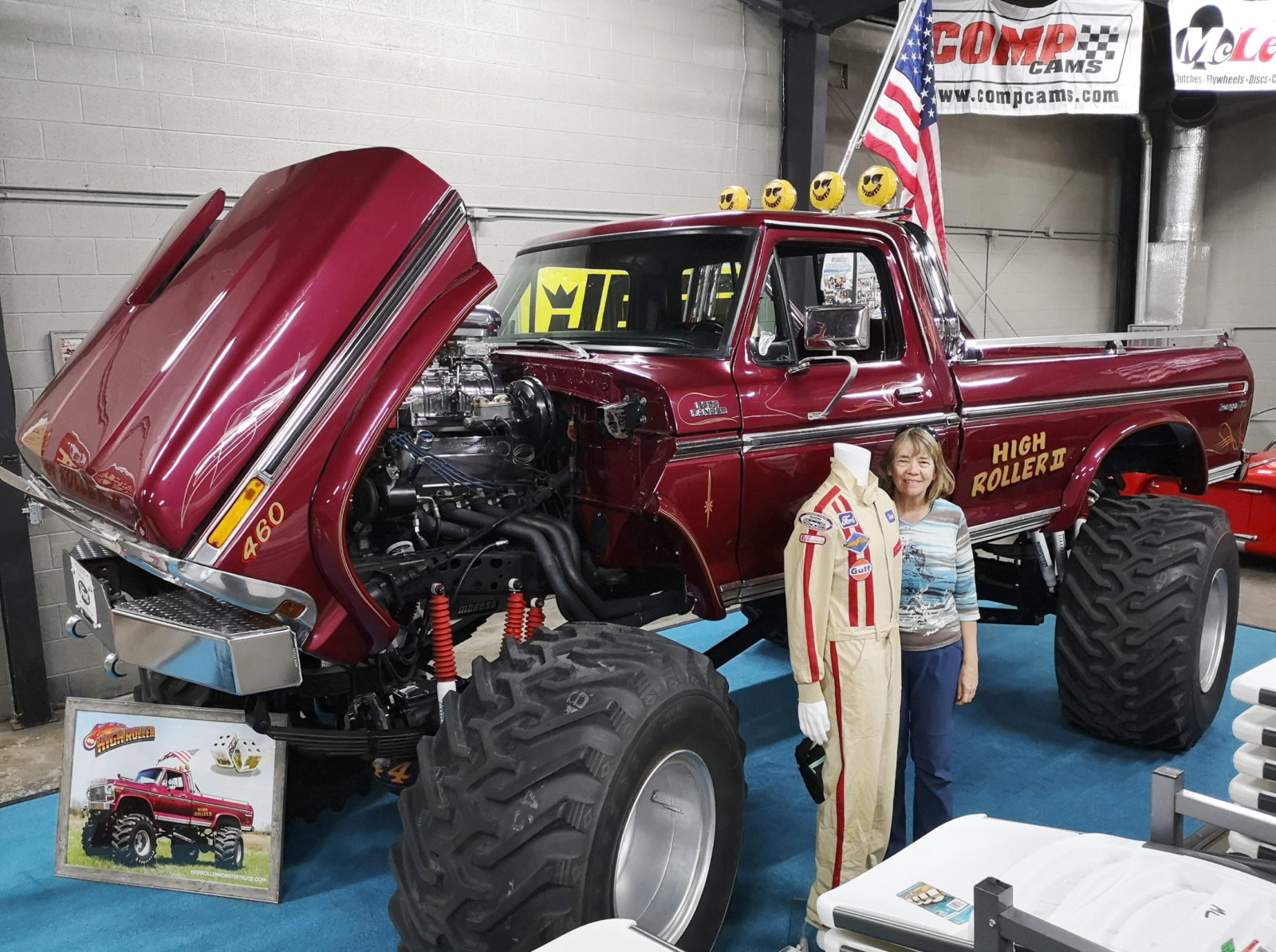
Our primary reason for going to Land Between The Lakes was that they had some mountain bike trails for us to check out. When we arrived at the North Visitor Centre, we found out they were closed on Mondays, so we backtracked to the Nickell Branch Campground and found a spectacular campsite by the lake, which was only $10 per night!
Since the time fell back on the weekend, it was dark when I was BBQing, our salmon for dinner. I was confused because I could see this really bright light that seemed to be coming along the shore from the south of us, and it turned out it was a large tugboat pushing a 3 by 5 grouping of barges in front of it. They had a big spotlight shining toward the front so the captain could see the front of the first set of barges. In the total dark, he maneuvered everything through the canal to the north of us! I’ve included a nighttime shot which wasn’t too great, but also a daytime one, as we saw many other barges over our 2-night stay here.
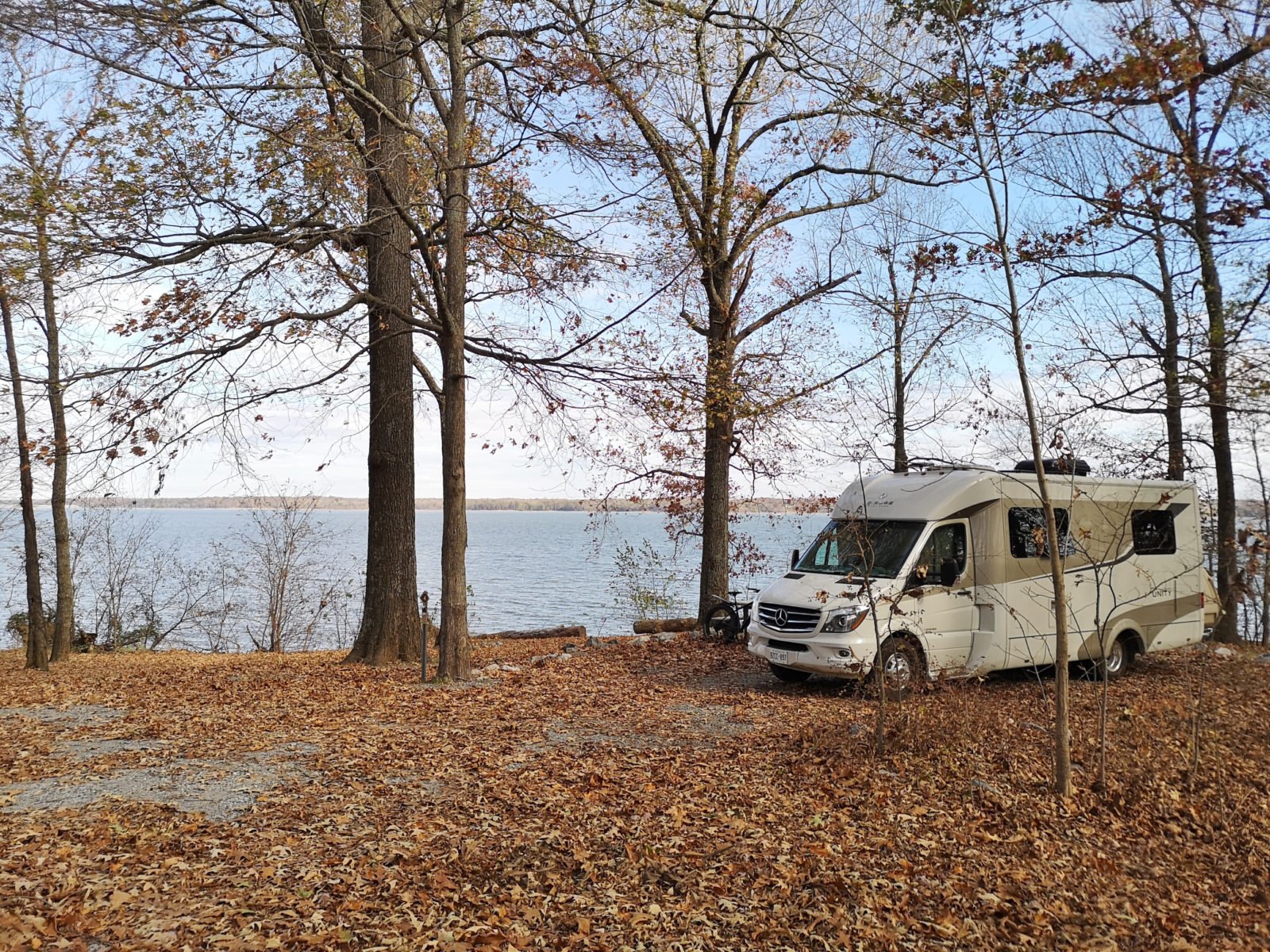

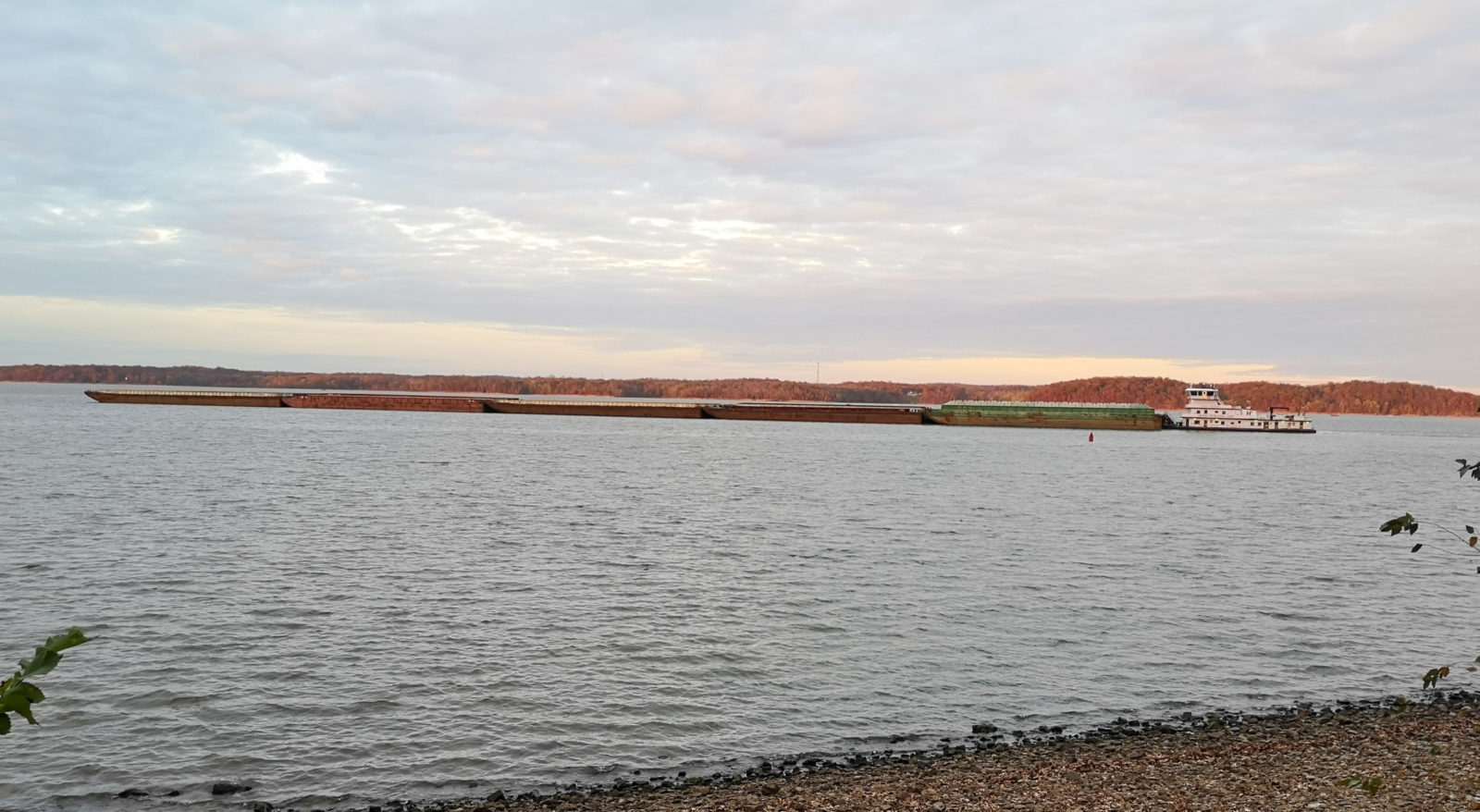
The main mountain bike trail in the park was the full Canal Loop, so we started off the next morning on the 21-kilometer (13-mile) route. The trail is a single-track trail listed as moderate to difficult. We found the sections on the east side of the main road moderate and the sections on the west side difficult.
We started off with lots of switchbacks, and the rocks and roots were a little tricky to see due to the fallen leaves. We went along the canal and under the bridge, and on the west side, we encountered many up and downhill sections. Of course, the downhill I found fun, but the hike a bike up hills, not so much. Our lunch was enjoyed looking over Kentucky Lake, and we even saw another barge go by. The trail eventually circled back by the North Visitor Centre, then crossed the road and returned to moderate difficulty. We saw young eagles, turkey vultures, rabbits, armadillos, deer, and many grey squirrels. Overall, an excellent MTB loop.
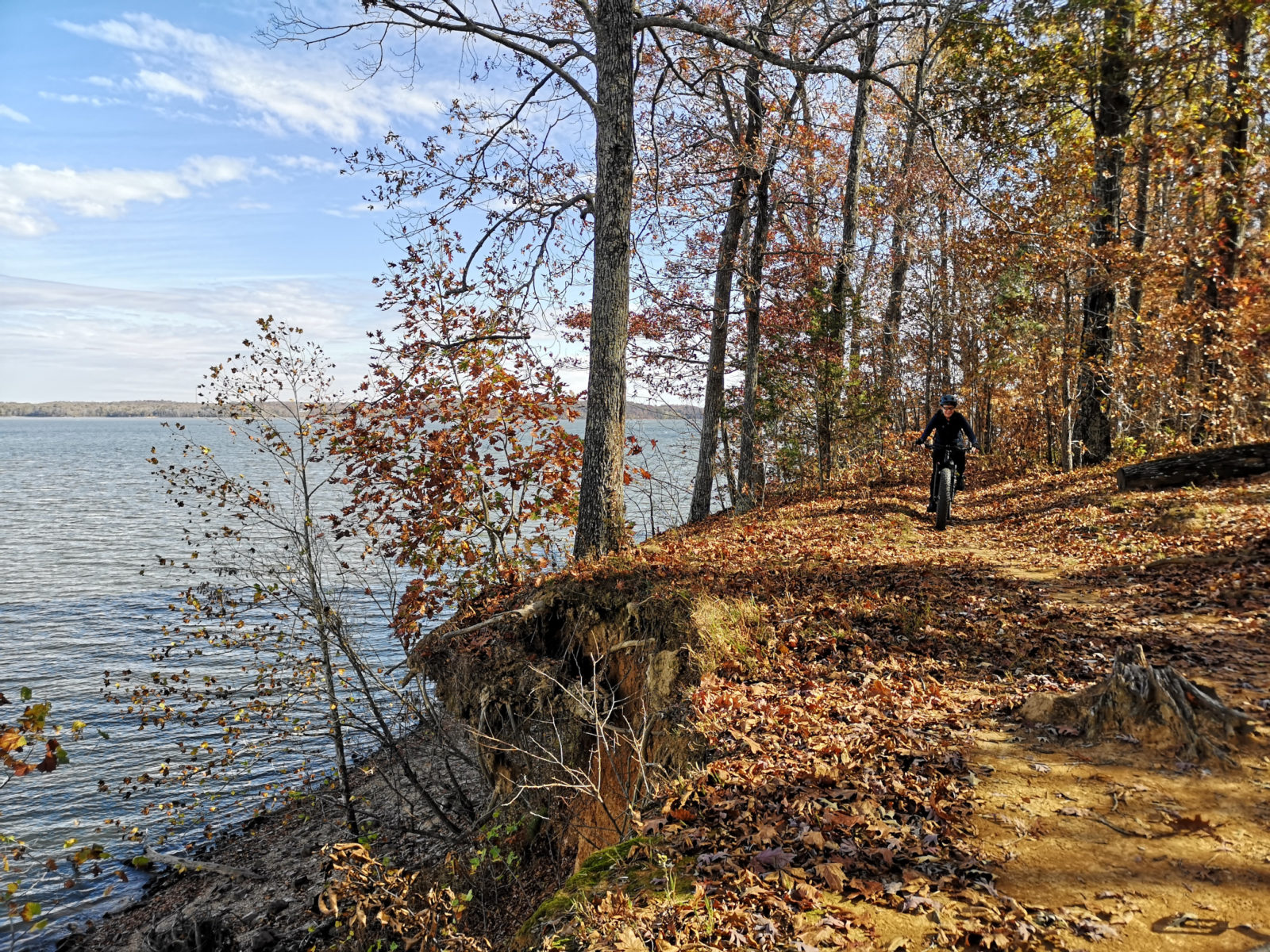
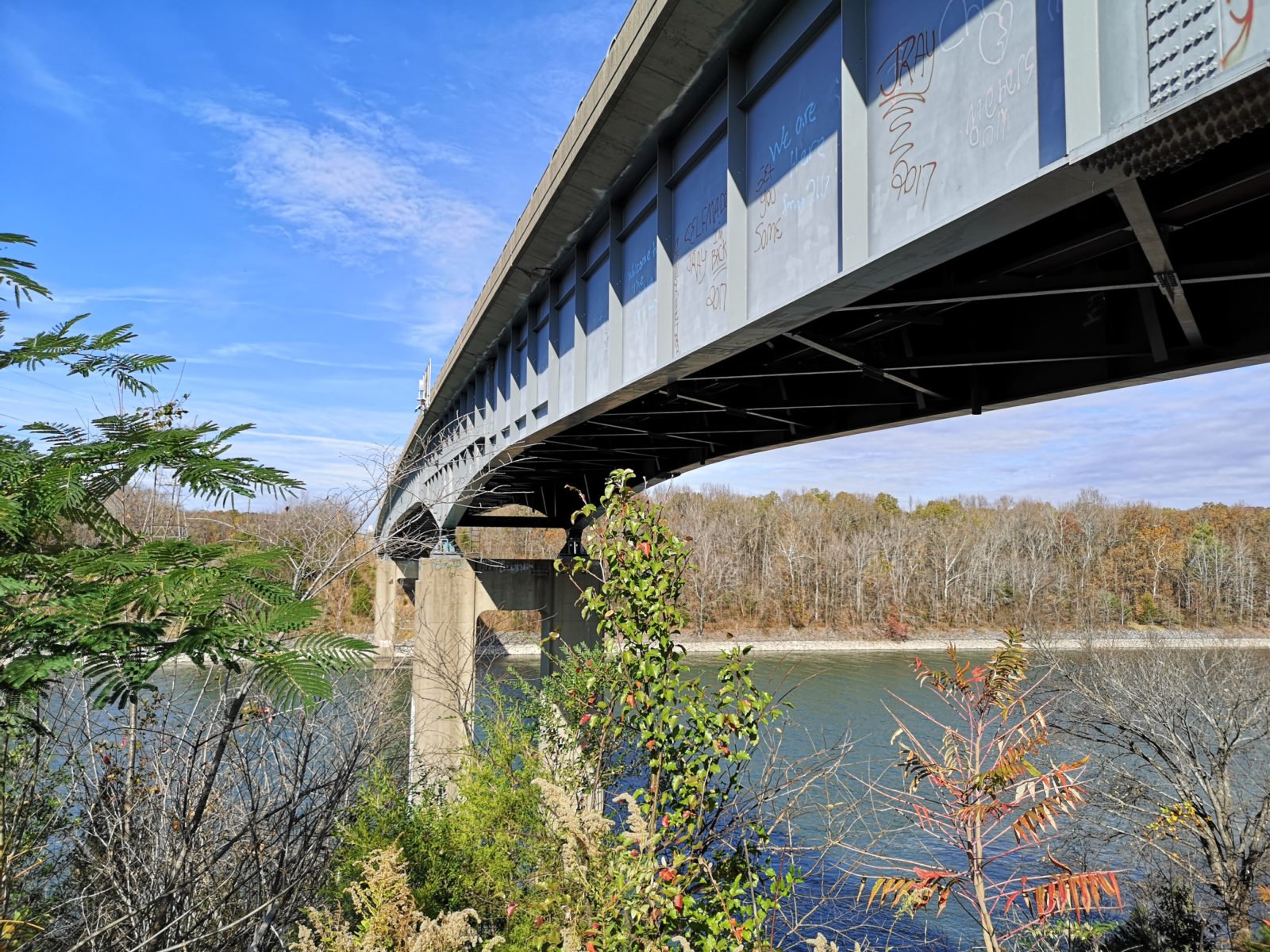
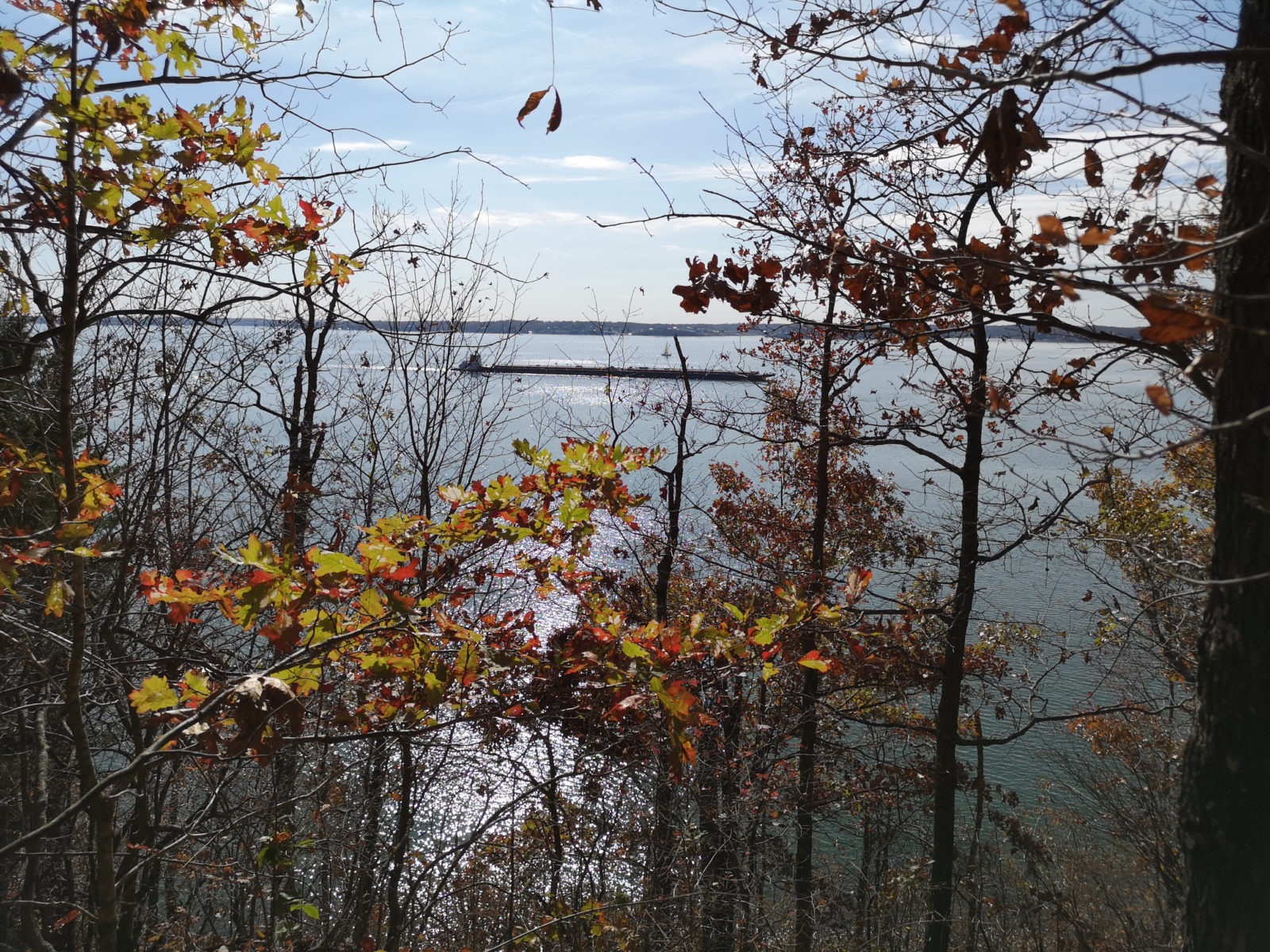
Before leaving Kentucky, we drove the entire distance of Land Between Two Lakes (LBL) and around the Elk and Bison Prairie enclosure but only saw 3 bison and a bunch of wild turkeys. We quickly visited the main visitor center and then stopped to see the Great Western Furnace (many of them in the LBL) used to make Iron Ore. We also saw some bison in the distance, so we went down a side road and saw a bunch of them really close up.
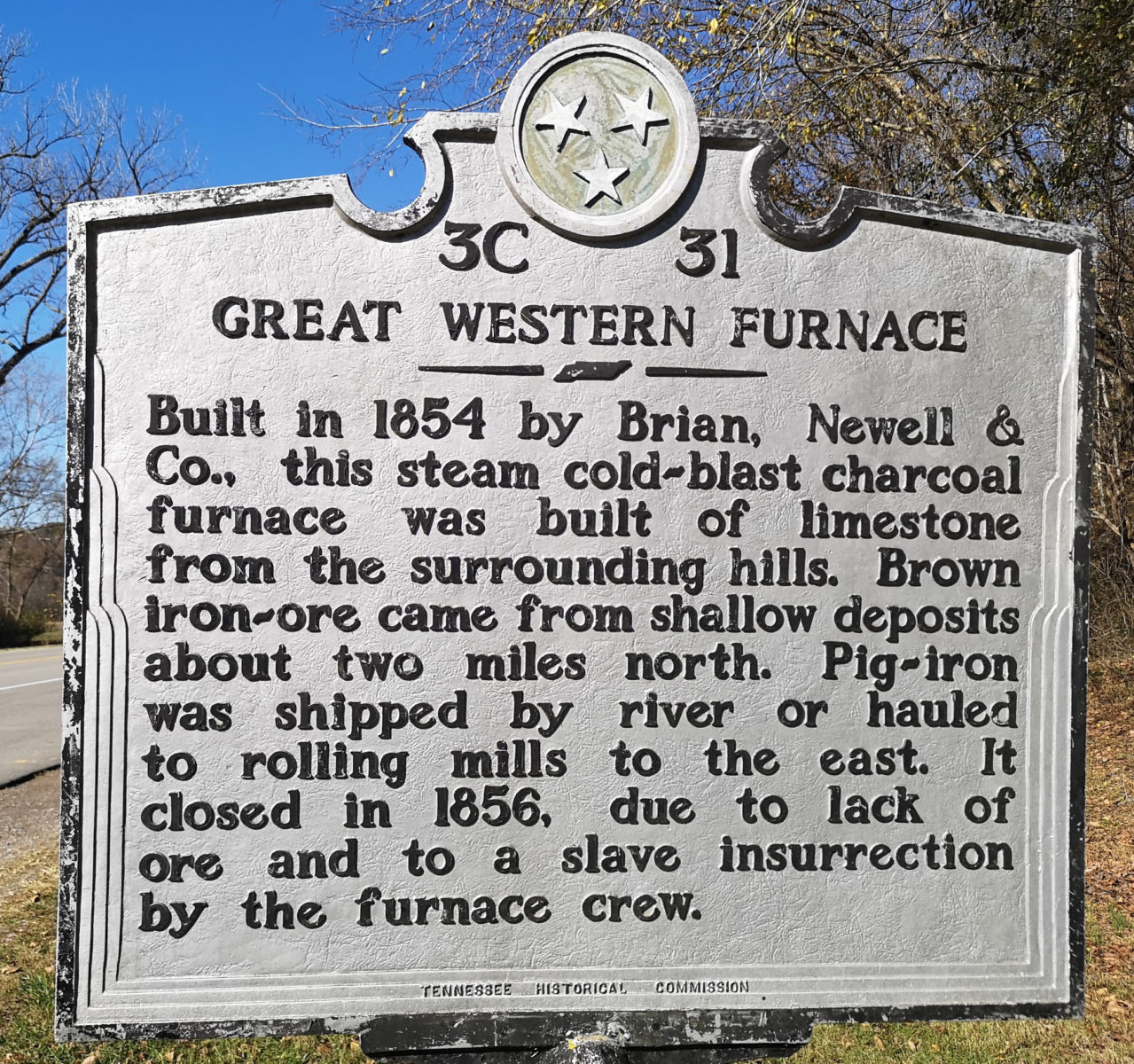

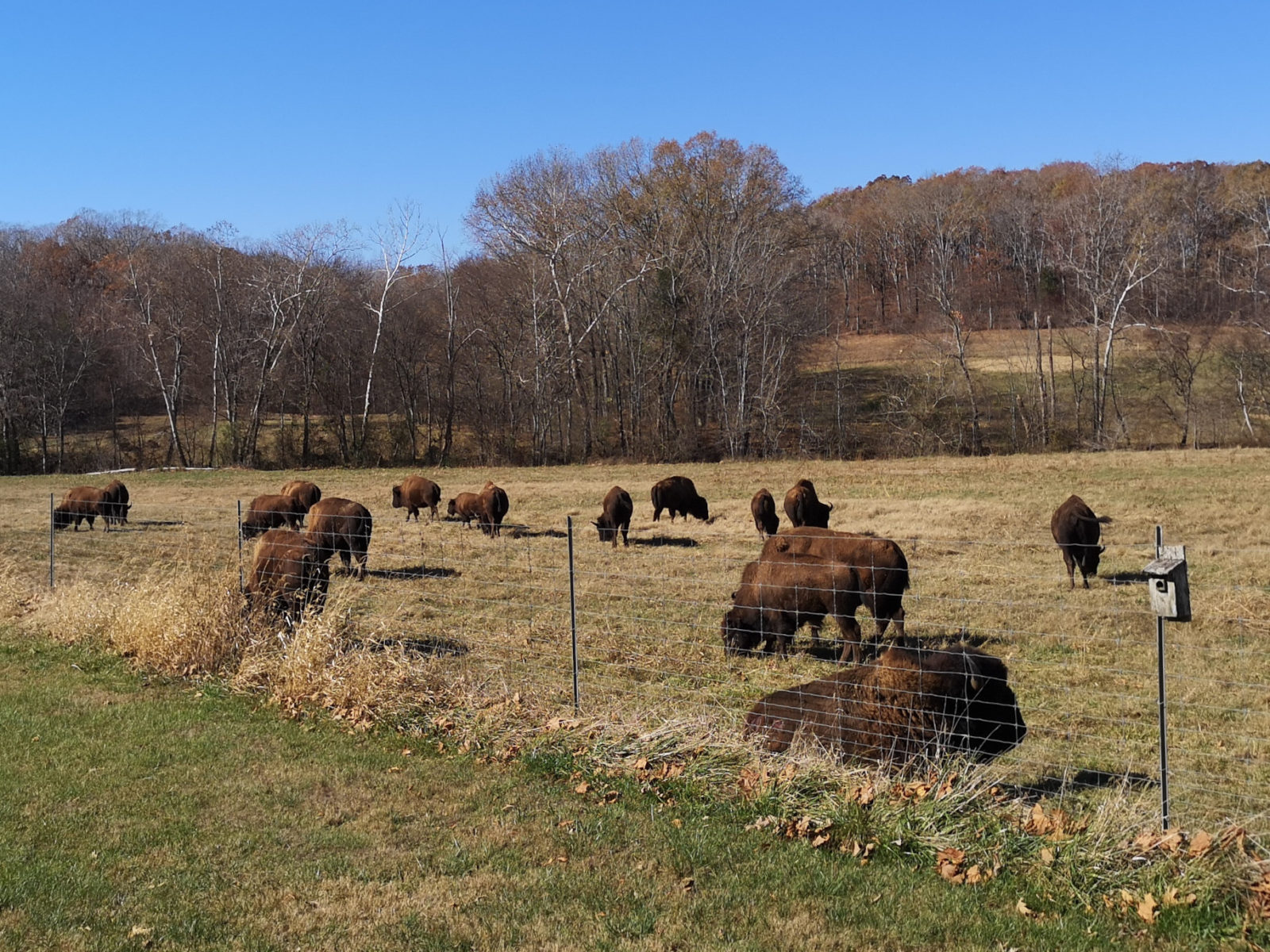
We barely dented Kentucky with our short visit, but it makes us want to head back to spend more time there. The weather was starting to be colder, so we had to get further south to avoid winterizing the RV. Definitely recommend you add Kentucky to your travel bucket list.


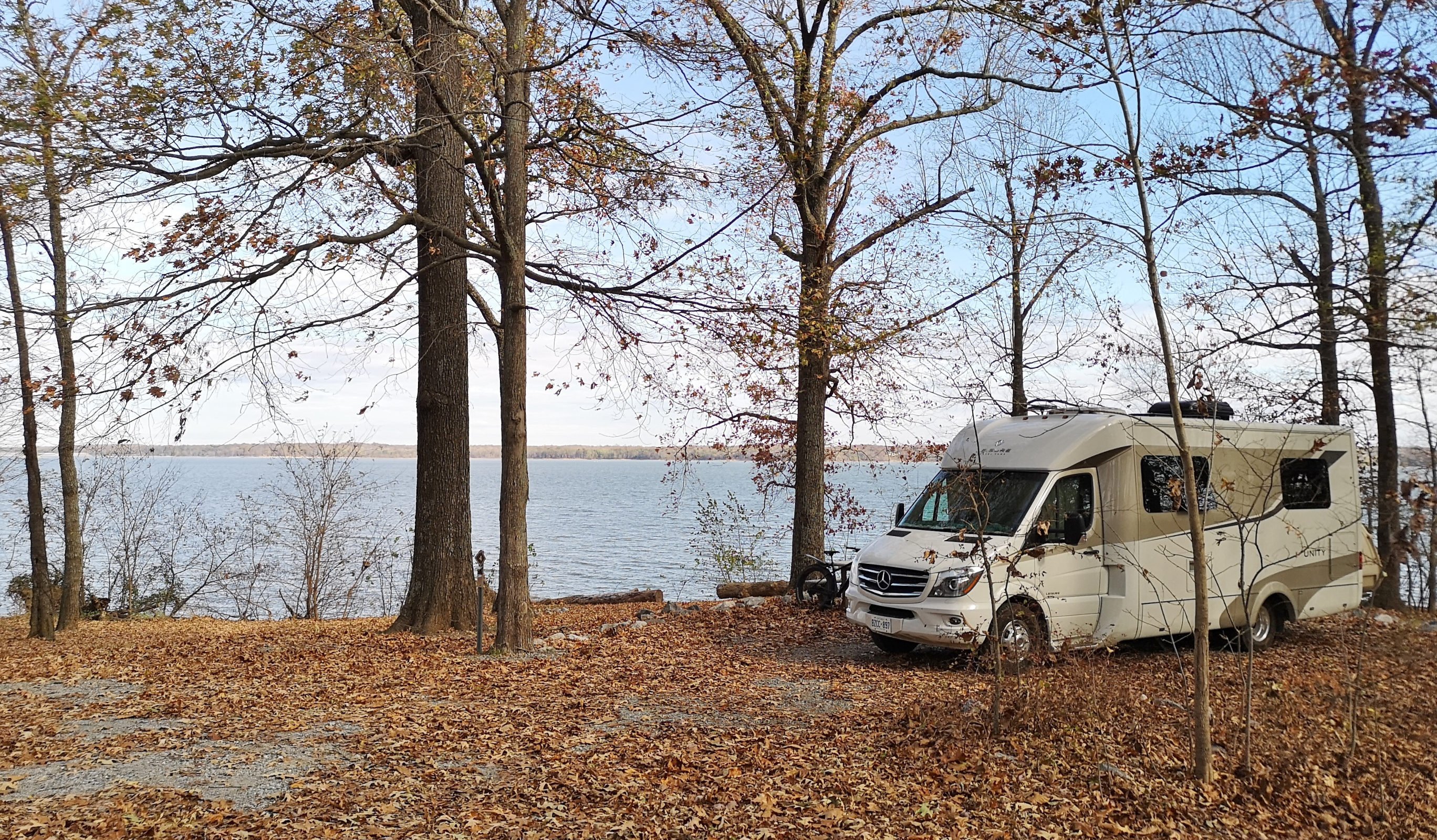



Comments